CONNECTIONS
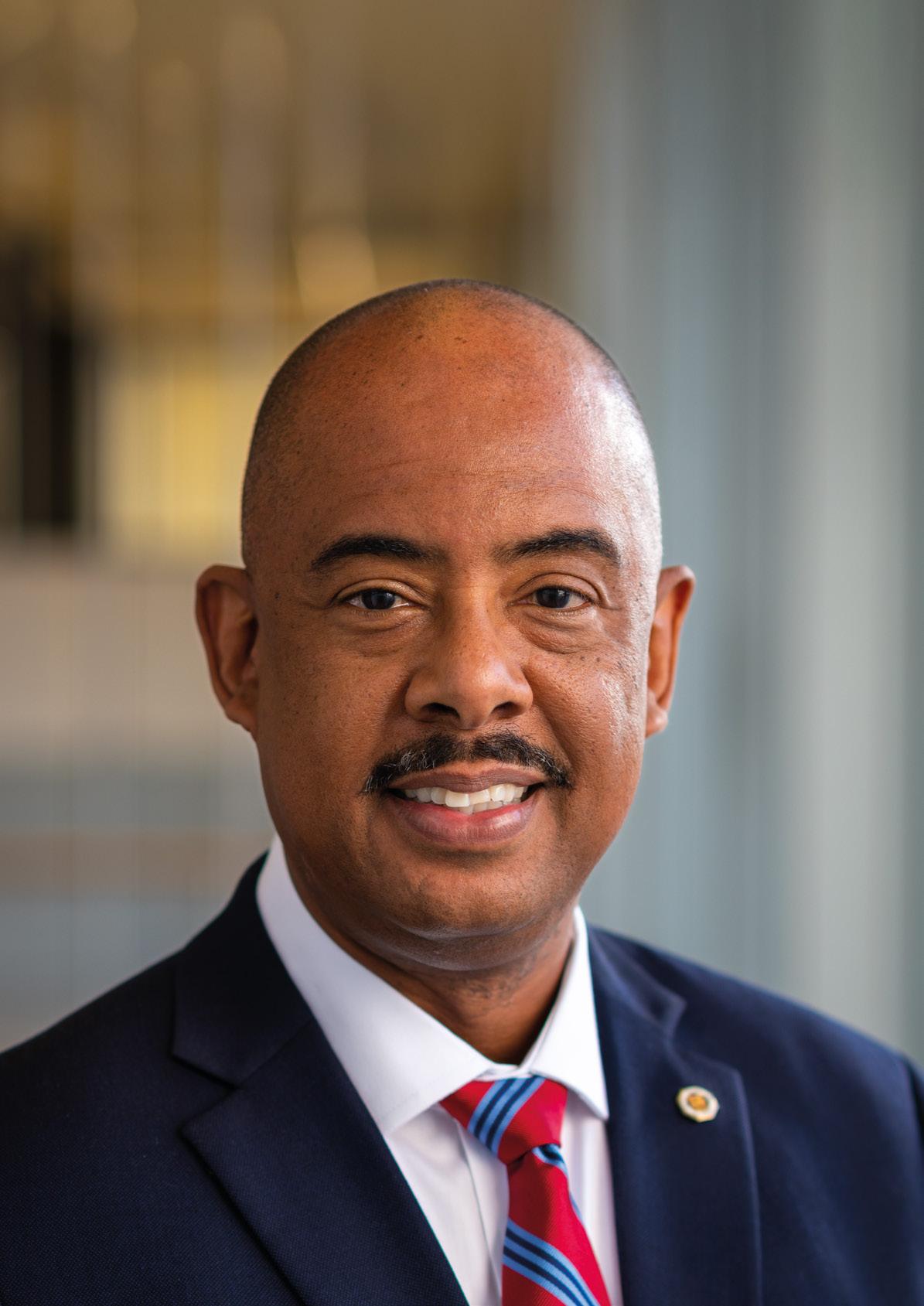
Built for Complexity: A New Model for Industrial Water in the Global South Page 24
The Megaproject Mindset: Building Large-Scale Resilient Water Systems Page 30
Data, Desalination, and Decarbonization: Navigating the Water–Energy Nexus Page 36
An exclusive thought leadership piece by Anselmo Collins , LADWP Senior
Assistant General Manager - Water System.
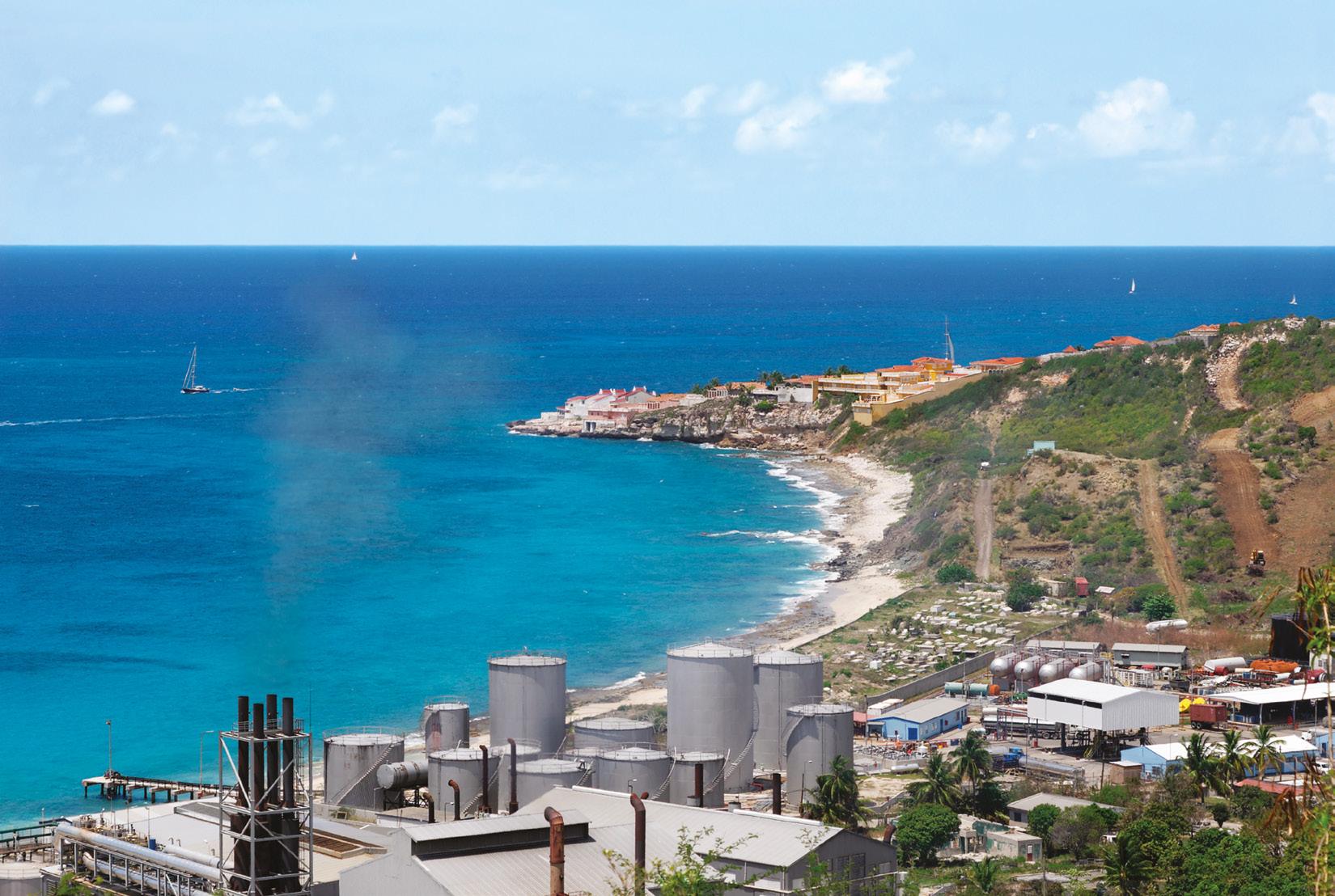
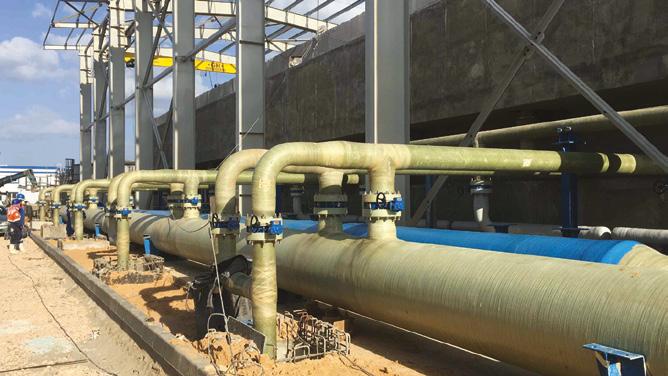
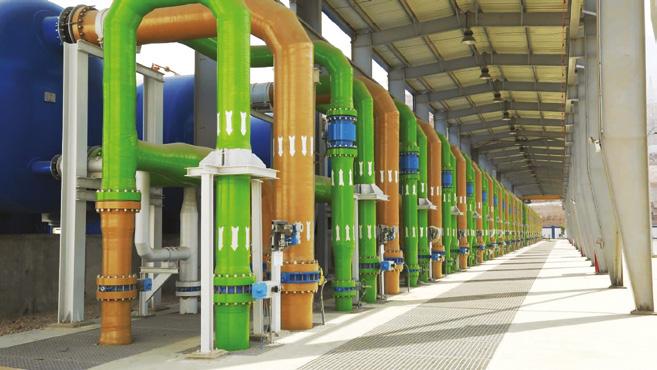
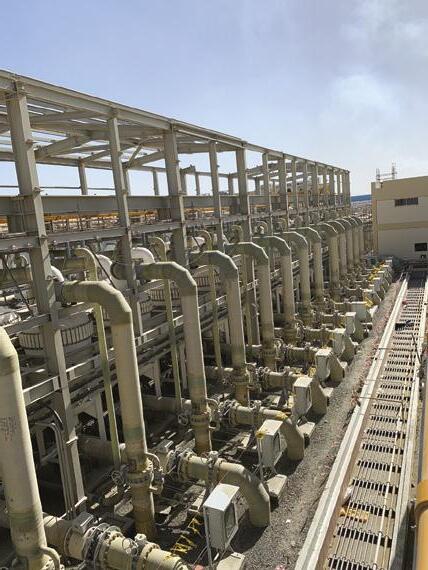
MESSAGE FROM THE SECRETARY GENERAL
MESSAGE FROM THE PRESIDENT
COVER STORY:
INTERVIEW WITH ANSELMO COLLINS, LADWP SENIOR
ASSISTANT GENERAL MANAGER - WATER SYSTEM
EXECUTIVE VIEWPOINTS
ʞ FROM UTILITY TO ASSET: REDEFINING WATER IN INDUSTRIAL DEVELOPMENT
ʞ BUILT FOR COMPLEXITY: A NEW MODEL FOR INDUSTRIAL WATER IN THE GLOBAL SOUTH
ʞ THE MEGAPROJECT MINDSET: BUILDING LARGE-SCALE RESILIENT WATER SYSTEMS
ʞ DATA, DESALINATION AND DECARBONIZATION: NAVIGATING THE WATER – ENERGY NEXUS
ʞ THE POLICY ARCHITECT: REPLICATING CALIFORNIA’S BLUEPRINT FOR WATER
IDRA Global Connections is published quarterly. The views expressed in articles contributed to IDRA Global Connections are not necessarily the views of the International Desalination And Reuse Association. IDRA assumes no responsibility for unsolicited manuscripts and/or artwork.
ʞ FROM LINEAR TO CIRCULAR: DIGITAL SOLUTIONS TRANSFORMING SUSTAINABILITY
IDRA NEWS
ʞ IDRA WORLD CONGRESS 2026
ʞ CALL FOR EXTENDED ABSTRACTS IDRA WORLD CONGRESS 2026
ʞ TURNING INSIGHT INTO ACTION: IDRA LAUNCHES NEW WHITE PAPERS
ʞ IDRA AND WEF FORGE GLOBAL PARTNERSHIP TO ACCELERATE WATER SOLUTIONS
ʞ DR. MARY M. MATTHEWS JOINS IDRA AS UNDP SPECIAL ADVISOR
ʞ IDRA / AFFILIATES/ PARTNERS UPCOMING EVENTS
ʞ IDRA WELCOMES NEW MEMBERS
Editorial Director Shannon McCarthy
Editorial Inquiries +1-978-774-0959 info@idrawater.org
Sponsorship Inquiries +1-978-774-0959 sponsorships@ idrawater.org
This publication is produced on recycled paper in support of sustainability
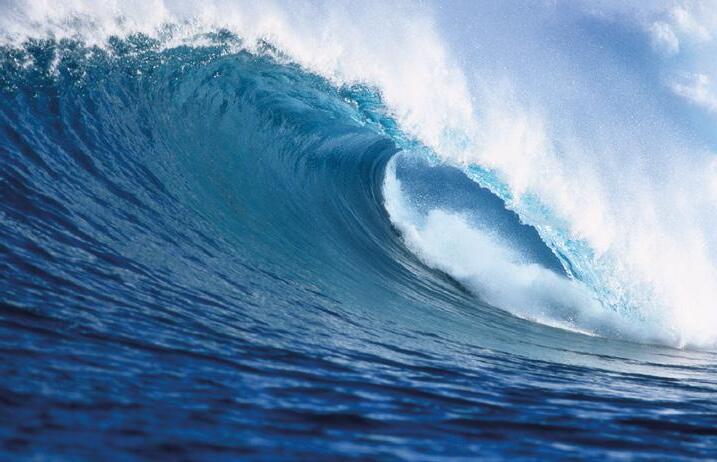


MESSAGE FROM THE SECRETARY GENERAL
Dear Members and Colleagues
Welcome to the Fall edition of IDRA Connections Magazine, released in conjunction with the IDRA Reykjavik Summit. This edition reflects not only the milestones we are achieving as a global community, but also the momentum we are carrying forward together in addressing water scarcity.
Our Global Community in Action
Across every region, IDRA members are confronting scarcity with ingenuity and resolve. This edition’s Executive Viewpoints showcase the breadth of leadership and innovation shaping our sector:
ʞ Anselmo Collins on how Los Angeles is pioneering large-scale reuse and utility transformation to secure water reliability.
ʞ Devesh Sharma on redefining water from a utility to an asset in the age of industrial development.
ʞ Luis Neves on how digital solutions in sustainability are moving from linear to circular.
ʞ Matteo Buzzetti on building large-scale resilient water systems.
ʞ Nizar Kammourie on navigating the water–energy nexus through data, desalination, and decarbonization.
ʞ Felicia Marcus on California’s water journey and policy evolution.
ʞ Anurag Bajpayee on the complexity of creating water systems in the Global South.
Together, these voices illustrate a common thread: the shift from water as a service to water as a strategic asset underpinning economies, communities, and climate resilience.
Engagement at New York Climate Week and WEFTEC
In September, IDRA was proud to take part in Climate Week in New York City and WEFTEC in Chicago—two influential gatherings for water and climate leaders.
At Climate Week, we ensured that water security was placed firmly within the climate conversation. At WEFTEC, we joined global utilities, industry, and innovators to advance practical pathways for accelerating desalination and water reuse.
We were also honored to participate in the U.S.–Saudi Water Summit 2025 in Palo Alto, California, a landmark platform showcasing Saudi Arabia’s ambitious water transformation journey while creating unparalleled opportunities for U.S. and global partners. With representation from senior government leaders, regulators, investors, and innovators, the Summit highlighted shared commitments to governance, advanced technologies, and sustainable investment in the future of water.
Together, these engagements reinforced a central truth: climate action and water security must move forward together, and they laid the groundwork for the Reykjavik Summit.
The
Reykjavik Summit
Our gathering in Iceland underscores the urgency of linking water and climate. Reykjavik has become a platform for policymakers, technologists, financiers, and civil society to converge on shared solutions of the water–climate nexus. With Iceland as a symbol of resilience and innovation, the Summit’s themes— collaboration across borders, integration of energy and water strategies, and bold steps toward a circular water economy—speak directly to the heart of IDRA’s mission.
Among the highlights is the Pre-Summit panel with Canada Ocean Racing’s Be Water Positive campaign, which will underscore the importance of circular water solutions in sport, alongside the ENOWA NEOM Brine Management Workshop, a vital forum on one of the most pressing challenges in desalination today.
We are also proud to host the IDRA NextWave Start-Up
Pitch Competition , which brings forward the next generation of innovators developing breakthrough desalination and reuse technologies. This initiative provides a platform for entrepreneurs to connect with investors, utilities, and industry leaders, accelerating novel solutions that will help secure the future of water.
Forward Momentum
Between Reykjavik and Riyadh, we have a crucial window to carry this momentum forward. The dialogues we begin in Iceland will continue across upcoming stages:
ʞ The IDRA–Arab Fund High-Level Kuwait Colloquium in February 2026, convening sovereign funds, corporate leaders, and policymakers on MENA’s infrastructure needs.
ʞ The IDRA World Congress 2026 in Saudi Arabia, held in partnership with the Saudi Government: the call for extended abstracts is now open.
To support this journey, IDRA is also releasing important new resources:
ʞ The Addressing Water Scarcity White Paper, developed in partnership with BCG and Stantec, framing scarcity as a global systemic crisis and identifying ten transformative levers—from advanced reuse and energy-efficient desalination to digital solutions and nature-based interventions—that can unlock resilient water systems at scale.
ʞ IDRA, in partnership with the WateReuse Association, has launched Initiating a Global Dialogue on Water Reuse—a landmark report uniting leaders from 18 countries to align global perspectives on advancing reuse. The paper charts a path forward through stronger governance, transparent communication, and new collaboration tools to accelerate reuse worldwide.
Closing
Each Summit, each Colloquium, each Congress, and each exchange of knowledge brings us closer to ensuring desalination and water reuse are recognized as cornerstones of resilience. The lessons from Iceland must inform the global community as we prepare for Saudi Arabia and beyond.
Thank you for your commitment, energy, and belief in IDRA’s mission. I look forward to the conversations we will have here in Reykjavik, and to the ripples of progress that will extend far beyond Iceland’s shores.
With gratitude, Shannon McCarthy Secretary General

MESSAGE FROM THE PRESIDENT
The world is living through a defining decade. Climate change, population growth, and urbanization are converging to place unprecedented stress on water systems across every continent. For billions, water security is no longer an abstract policy goal but an immediate human necessity. In this moment, our community carries a profound responsibility: to accelerate the solutions that will define how societies adapt, thrive, and sustain themselves in a warming world.
That is why the IDRA Reykjavik Summit 2025 matters so deeply. It is more than a meeting of experts. It is a gathering of resolve. Here, we affirm that desalination and water reuse are not supplemental options but essential infrastructure for climate resilience, prosperity, and equity in the twenty-first century.
Desalination and Reuse as Cornerstones
Our mission at IDRA is to ensure desalination and reuse are recognized not as technologies of last resort but as cornerstones of global resilience. This shift in perspective is critical. The challenges before us are immense, brine management, decarbonization, and digital transformation, but so too are the opportunities. Every innovation expands the space of possibility for nations that once believed scarcity was their destiny. Every project that proves reuse at scale, every membrane that delivers efficiency gains, and every integrated system that reduces carbon intensity brings us closer to a future where water security is universal.
From the Margins to the Center
For too long, water has been treated as a side note in the global climate dialogue. That era is ending.
The world is now beginning to understand that the future of water is the future of climate, and vice versa. Our sector is no longer at the margins of the debate. It is at its center. This recognition brings with it a profound responsibility: to lead with clarity, to innovate with urgency, and to collaborate with courage.
Looking Ahead
While Reykjavik marks an important milestone, it is also a bridge to the future. Our community is already preparing for the IDRA World Congress 2026 in Saudi Arabia, which will be the largest gathering of its kind in history. There, the breakthroughs seeded in Reykjavik will mature into commitments and partnerships that shape the next era of our industry. But we must also look beyond even Riyadh. The years ahead will test our capacity to integrate water, energy, and climate strategies at a scale and pace without precedent.
A Call to Leadership
I want to thank every sponsor, speaker, and participant who has contributed to this Summit. Your presence demonstrates the power of our collective mission. Let Reykjavik be remembered not only as a summit in a remarkable nation but also as a turning point in how the world views water, not as a constraint, but as a pathway to resilience, equity, and hope.
With vision and determination,
Jon Freedman President

FROM VISION TO LEGACY:
The Leadership Behind Los Angeles Water Reinvention
An exclusive thought leadership piece by Anselmo Collins , LADWP Senior Assistant General Manager - Water System.
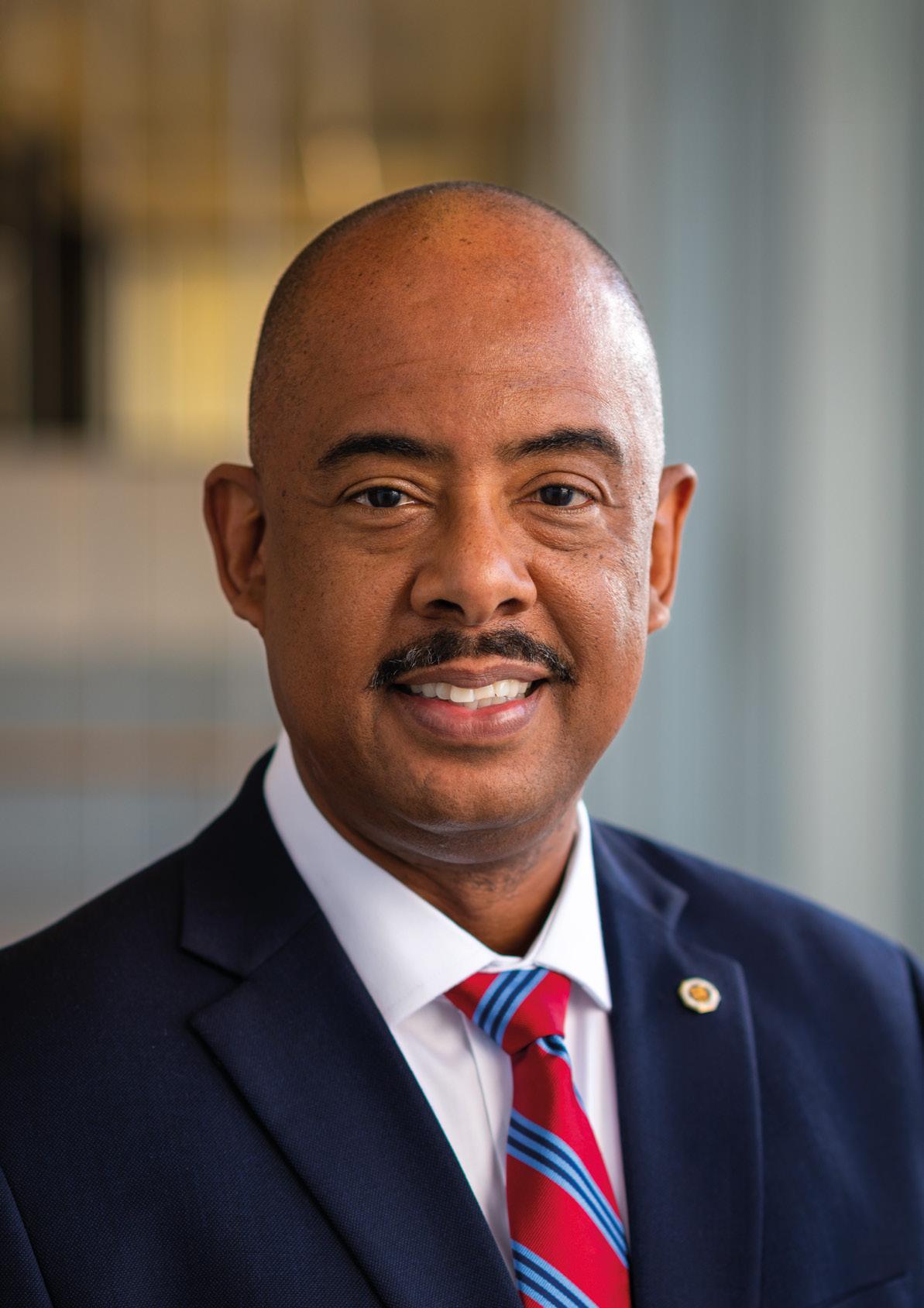
Every drop of water on Earth comes from somewhere. From the clouds above to the groundwater below, across oceans, streams, rivers, and all the way into the tap water from the faucet of our homes — every drop is part of an interconnected cycle. All water on Earth is recycled, endlessly moving. It is the ultimate resource, the heartbeat of our ecosystems and the foundation of every thriving community.
Yet today, one of humanity’s greatest challenges is unfolding with growing urgency. Accelerating consequences of climate change, prolonged droughts, rising temperatures, increasing seismic risk, mounting pressures on aging infrastructure, are converging to create a crisis of water scarcity that affects every corner of the world — including large cities like the City of Los Angeles.
For major metropolitan areas like Los Angeles to thrive in a future of climate unpredictability, they must reimagine how they source and manage water — turning toward innovative solutions.
In the face of this challenge, Los Angeles is reimagining the future of water. A key leader at the forefront of this effort is Anselmo Collins, Senior Assistant General Manager of the Water System at the Los Angeles Department of Water and Power (LADWP). With more than three decades of service at LADWP, Collins is leading critical efforts to secure L.A.’s water
future by investing in local, sustainable water resources — reducing reliance on purchased imported supplies from hundreds of miles away and building resilience in an era defined by climate unpredictability.
Collins’ team at LADWP is implementing bold strategies to expand stormwater capture, increase groundwater replenishment, modernize infrastructure, and advance water recycling technologies. These initiatives not only reflect a city adapting to the pressures of a changing climate but also represent a broader shift in how large urban centers must think about water — as a local resource, a shared responsibility, and a legacy worth protecting.
Collins shared the vision behind LADWP’s current work and the importance of investing in local water sources. “Los Angeles is laying a foundation for a holistic approach to managing all water resources in an integrated and sustainable way, where every drop is valued, and every community member is included in the fabric of our story.”
Poised for a lasting and positive impact is Pure Water Los Angeles, a forwardthinking and collaborative initiative led by the LADWP and Los Angeles Sanitation and Environment (LASAN). This ambitious project is designed to develop a new, reliable source of local drinking water supply — through the advanced
purification of recycled water, directly addressing the mounting effects of climate change and long-term water scarcity.
Overcoming the skepticism of the past, the City is now making significant progress— reimagining the way they think about water systems and embracing innovation to propel Los Angeles into a future of resilience, sustainability, and water independence.
Meeting Ambitious Targets
From the outset of his career in water resources, Collins has approached every challenge with bold thinking and a determination to solve complex problems. Now in a pivotal leadership role at LADWP, he stands at the forefront of developing transformative solutions to one of the most current pressing water challenges. Collins credits the progress being made to the collaboration and dedication of his team — professionals equally committed to ensuring a sustainable and resilient water future for Los Angeles.
This sense of urgency aligns with broader state priorities. Governor Gavin Newsom has set ambitious statewide targets for California to produce an additional 800,000 acre-feet of recycled water by 2030 and 1.8 million acre-feet by 2040.
“At LADWP, we view these goals not as distant aspirations but as a call to action. Pure Water Los Angeles is a program designed to be a cornerstone of the state’s
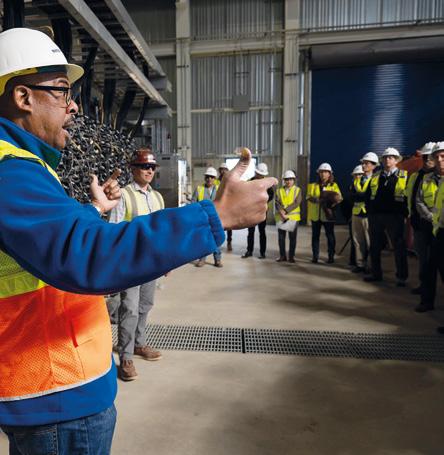
recycled water future. At full scale, PWLA will produce up to 230 million gallons per day of purified water—enough to significantly contribute to California’s 2040 target of 1.8 million acre-feet.”
Central to this effort is taking L.A.’s wastewater and treating it to be a new, safe, and reliable local water supply. This purified recycled water will not only supplement the city’s groundwater resources but will also help optimize and diversify local supplies. As a critical component of the city’s long-term water strategy, Pure Water Los Angeles supports Los Angeles’ goal of sourcing 70 percent of its water locally—reducing reliance on imported water and building resilience in the face of climate change.
According to Collins, one of LADWP’s greatest opportunities lies in its ability
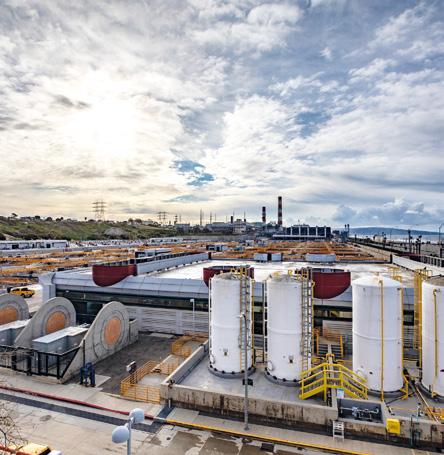
to integrate advanced water purification technologies — such as membrane filtration, reverse osmosis, and ultraviolet advanced oxidation — into a system that is both resilient and scalable. However, he emphasized that innovation alone is not enough. LADWP’s path forward will also require aligning regulatory frameworks, modernizing aging infrastructure, and — perhaps most historically critical — earning and maintaining public trust. For Collins, true progress means pairing technological advancement with transparency, community engagement, and a steadfast commitment to equity.
An engineering project of this scale has not been attempted since the original Los Angeles Aqueduct was completed in 1913. Pure Water Los Angeles is a combination
of investments in infrastructure, communities, and building a legacy of water security in Los Angeles. More than a project — it's a vision that Collins and the City, are working to bring to life through engineering, innovation, and outreach.
“For Angelenos, this means a more reliable and climate-resilient water supply. It also means a more equitable system. We’re committed to ensuring that every community — especially those that have historically been underserved — benefits from this transformation. That includes targeted infrastructure investments, affordability programs, and robust public engagement to build trust in the safety and sustainability of recycled water.”
New Era, New Local Water
As Los Angeles looks toward a more sustainable future, a new era of water resource management is taking shape — one that not only protects the environment but also creates economic opportunities for future generations.
For decades, the City has relied heavily on imported water from the Bay Delta, the Colorado River Aqueduct, and, for over a century, from the Eastern Sierra via the Los Angeles Aqueduct. While these sources have long supported Los Angeles, they are increasingly strained by drought, legal challenges, and the growing impacts of climate change.

According to Collins, this moment calls “Shifting to local water sources like recycled water is one of the most powerful ways we can build climate resilience. Purchased imported water from the Colorado River and Northern California is increasingly unreliable due to cyclical droughts, legal constraints, and competing demands on supply. By investing in local reuse, we’re insulating Los Angeles from those external risks.” Collins emphasized that local water is more than just a supply strategy — it’s a long-term vision. “Local water gives us greater control over our destiny. It reduces tensions over shared resources that are all too limited. And by reducing the energy needed to transport water over hundreds of miles, we’re also cutting our carbon footprint. It’s a win for resilience, for sustainability, and for regional cooperation.”
Los Angeles is now part of a growing wave of cities embracing purified recycled water as a central solution to long-term water security. In fact, Pure Water programs are becoming increasingly common across California’s water utility sector. Orange County has been a pioneer, incorporating purified recycled water through indirect potable reuse into its supply since 2008, while Monterey began doing the same in 2020. Now, with Pure Water Los Angeles, the state’s largest city is stepping into a leadership role — developing a purified
recycled water supply that will diversify local resources in an affordable, equitable, and environmentally responsible way.
Engineering Purity
Purified recycled water is the result of providing additional steps past the existing wastewater treatment process, known as full advanced treatment. This type of treatment in water recycling refers to processes applied after the conventional primary and secondary wastewater treatment. This secondary effluent, or treated wastewater, is currently sent to the Santa Monica Bay. As part of LADWP’s commitment to a more sustainable water future, LADWP is advancing efforts under Pure Water Los Angeles to modernize the system. The utility will build and operate membrane bioreactors to modernize the existing secondary treatment, to produce high quality source water for advanced treatment.
This effort is part of the holistic approach LADWP and Collins is taking to manage all their water resources in an integrated, sustainable manner. With the inclusion of advanced treatment to produce purified recycled water, this water can then be added to our drinking water in full compliance with the State of California’s strict regulations. Pure Water Los Angeles will meet or exceed public health and safety standards.
While the final method of delivering purified recycled water to customers is still under evaluation, LADWP is exploring both Indirect Potable Reuse (IPR) and Direct Potable Reuse (DPR) — approaches
that employ advanced treatment processes to purify wastewater to meet safe drinking water standards. DPR requires more stringent treatment due to the lack of an environmental buffer, such as a groundwater basin. Both DPR and IPR methods use a "treatment train" approach, typically involving ultrafiltration, reverse osmosis, and ultraviolet light/advanced oxidation. DPR goes further and requires additional processes like ozonation and biologically active filtration, a multi barrier water treatment process that controls taste and odor and ensures a higher level of pathogen and chemical removal. This additional step generates better overall water quality before it’s ready for direct drinking water distribution to customers.
groundwater treatment facility before distribution to customers. LADWP’s exploration of both IPR and DPR is a reflection of the vision Collins, and his team are working to achieve — a system that is resilient, adaptable, and rooted in the best available science and engineering practices.
Collaboration is Critical
Delivering on the scale of a project like Pure Water Los Angeles will require one of the most significant infrastructure investments in the City’s recent history. The program calls for an expansive network of facilities, including advance


IPR, widely used in other Pure Water programs, differs from DPR by moving purified recycled water through a
water treatment systems, new pipelines, a conveyance system, pump stations, storage tanks, well fields, direct potable
reuse treatment, and groundwater treatment. At full scale, the project is expected to require approximately 70 acres of real estate across Los Angeles to support project needs.
The estimated cost is currently from $21 to $25.4 billion (2024 U.S. dollars). This scale of investment reflects the city’s long-term commitment to building a water system that is climate-resilient, community-focused, and locally controlled. The infrastructure built for Pure Water Los Angeles will be jointly operated and maintained by LADWP and LASAN staff, creating economic opportunities for Angelenos.
But building a reliable water future takes more than engineering and funding — it requires deep collaboration. “Collaboration is key,” Collins explained, "We're working closely with partners like the Metropolitan Water District of Southern California and the Water Replenishment District to align our efforts and share resources. Our partnership with LASAN and West Basin Municipal Water District has enabled the recycling of more than 11 billion gallons of water annually from the Hyperion Water Reclamation Plant, while also. reducing effluent discharges into the Santa Monica Bay. These partnerships allow us to scale more quickly and efficiently.”
To that end, LADWP is actively pursuing support through federal and state funding mechanisms, including the Clean Water State Revolving Fund and federal infrastructure grants. These sources will be instrumental in moving from planning to implementation.
The benefits of projects like Pure Water Los Angeles extend far beyond regional water delivery. Pure Water Los Angeles is designed to bring regional value to the city, supporting workforce development, reducing reliance on purchased imported water, protecting the Santa Monica Bay, and enhancing public health. As LADWP sees it, this is not just a water project — it’s a people-first initiative.
At the heart of this program is a commitment to inclusive and transparent community engagement. LADWP and LASAN are ensuring that every step of the process — from technical planning to final implementation — prioritizes the voices and needs of Angelenos.
“Diversifying our water portfolio includes embedding the interest of the public as a top priority who are actively shaping our sustainable water future alongside us," Collins said.
As part of that public-focused planning, LADWP and LASAN have established a comprehensive framework to guide the program’s development. The Master Plan and Hyperion Program Implementation Plan serve as roadmaps for infrastructure and policy decisions, while the Programmatic Environmental Impact Report (PEIR) — required under the California Environmental Quality Act (CEQA) — will assess potential environmental impacts and identify alternatives. The Final PEIR will ultimately guide decision-making and implementation.
To support this work, the project team has convened a Stakeholder Engagement Group, consisting of community representatives,
subject matter experts, and advocates. Through a series of virtual and inperson public meetings — and tabling opportunities across the city — residents are being invited into the planning process, helping shape a future where water security, equity, and sustainability go hand in hand.
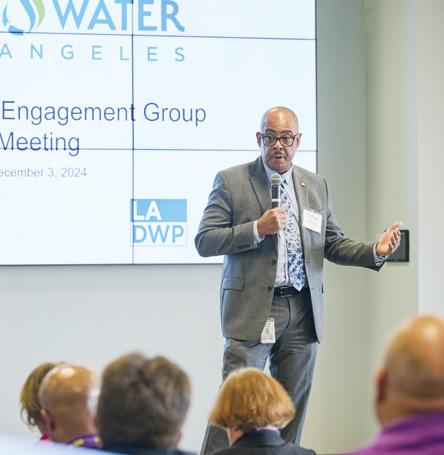
Leading the Way
Public acceptance is at the heart of Pure Water Los Angeles. As the city embarks on one of the most ambitious water recycling initiatives in the nation, the success of this effort hinges not only on engineering and investment — but on connection. Collins and his team will be instrumental in building this connection – creating unity in the City to adapt and embrace a resource once seen as waste into a symbol of opportunity and resilience.
LADWP and LASAN recognize that transforming our relationship with water must be a collective journey, and that journey must include every community. Ensuring equity is not just an aspirational goal — it’s a foundational principle of Pure Water Los Angeles.
To that end, an equity roadmap is in development, in close collaboration with community-based organizations to ensure a meaningful engagement process that is tailored to underserved communities. LADWP’s approach aims to help better understand how Pure Water Los Angeles could impact underserved communities and address their specific needs or concerns — ensuring the benefits are equitably shared across the city.
Los Angeles is stepping into a leadership role — not just in technology or infrastructure — but in showing the world that water transformation is, at its best, a human endeavor. It requires partnership, trust, and courageous leadership, grounded in public service and shared values. And while LADWP and LASAN are leading this work locally, its impact could ripple far beyond city limits.
From that experience, Collins offers four guiding principles that have shaped the Pure Water LA journey so far:
• “First, set bold goals. Don’t be afraid to reimagine your water system from the ground up.
• Second, invest in public trust. Transparency, education, and community engagement are just as important as pipes and pumps.
• Third, put equity at the center. Infrastructure must serve everyone, not just the most visible or vocal communities.
• And finally, advocate for supportive policies. Federal and state reforms that streamline permitting and expand funding for advanced treatment technologies can accelerate progress across the board. We’ve benefited from programs like the Bipartisan Infrastructure Law and California’s Proposition 1, and we believe continued investment at all levels of government is essential.”
These principles aren’t just theoretical — they are playing out daily on the ground. At the Hyperion Water Reclamation Plant, where cutting-edge pilot technologies are being tested, the future is taking shape.
For Collins, every visit to the site brings renewed motivation.
“EveryvisittoHyperionWaterReclamation Plant, the ocean breeze is gently passing by, and the gulls are calling overhead, I am filled with hope for the future,” he shared.”
Watching our dedicated teams work tirelessly to pilot cutting-edge technology, I can clearly see the fruits of our labor becoming a reality. I stand energized, ready to face what is ahead of us.”
A lasting legacy often stems from a brilliant idea in response to a great challenge. Pure Water Los Angeles is exactly that, a visionary solution born to make history. What was once dismissed as waste, purified recycled water is emerging as a powerful and transformative resource securing our water future for generations to come.
What was once discarded is now leading the way.
lantania.com/en
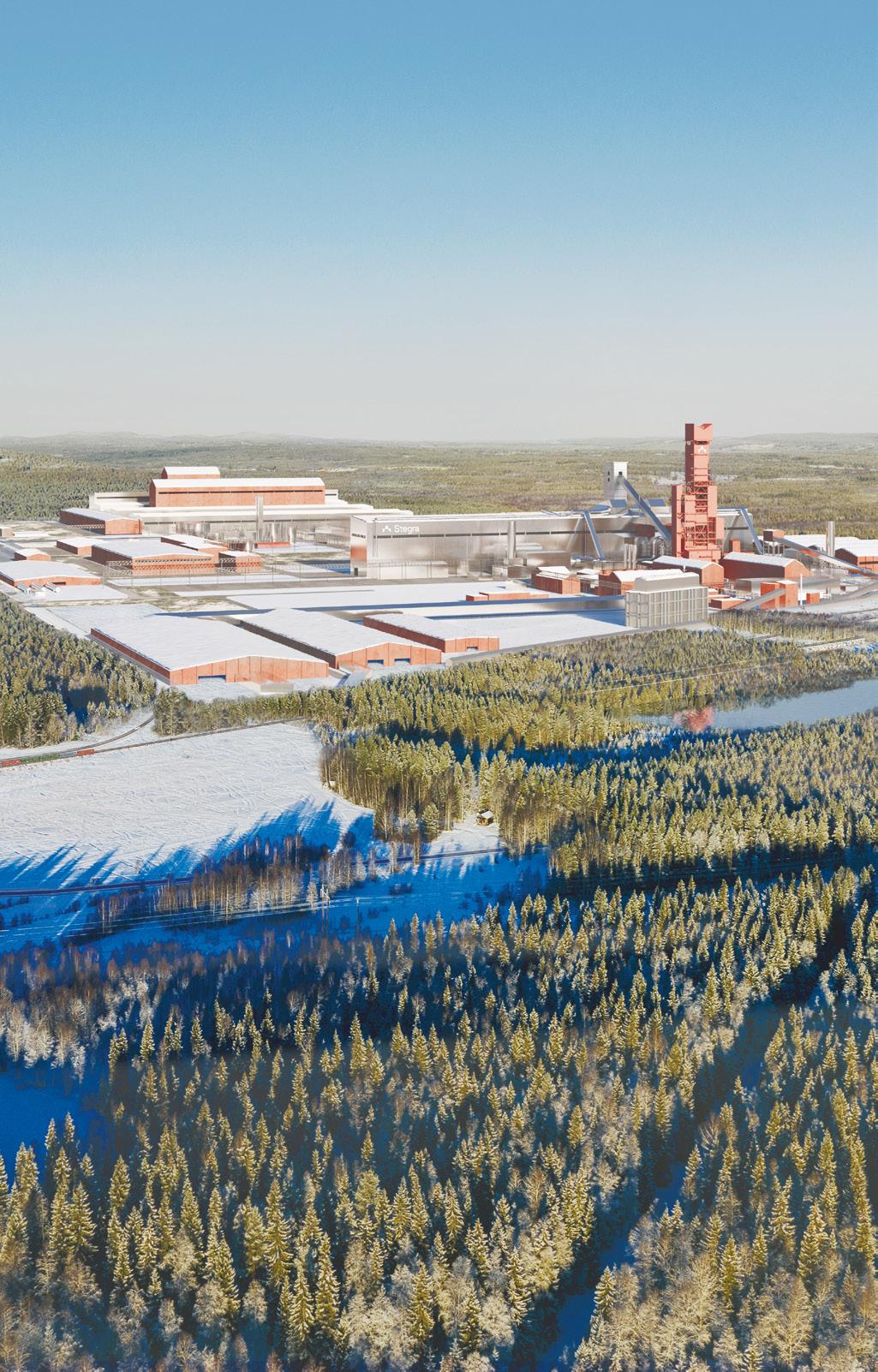
EXECUTIVE VIEWPOINT
FROM UTILITY TO ASSET:
REDEFINING WATER IN INDUSTRIAL DEVELOPMENT
By Mr. Devesh Sharma, Managing Director of Aquatech
Industrial development has always depended on water. But how we think about water has shifted through three distinct eras — and with each phase, the stakes have risen.
From Cost to Compliance to Survival
For decades, water was treated as a line-item cost to be managed in-house. Then came the compliance era, when ESG and sustainability shaped investment and boardroom decisions.
Today, we are in a survival-driven phase, where water scarcity is hitting just about every industrial hub in the world. We can’t seriously talk about droughts that come and go – we have entered an age of aridification and permanent reshaping of the water cycle.
Water scarcity is more widespread, more persistent and more intense, and this is a permanent state of affairs. This increases the chance of water leading to catastrophic downside, which in an industrial scenario could be an operational shutdown or a project failing to get off the ground in the first place.
Table 1: Evolution of Industrial Water Thinking
Pase From Characteristics Weakness
COSTDRIVEN Utility Expense In-house minimize spend Short-term reactive
Compliande & Sustainability
SURVIVALDRIVEN (TODAY) Business Resilience
Response to longer, more severe droughts; boardroom visibility First place to get in downturns
Permanent aridification; social license tied to stewardship Risk of shutdown or project failure
Rising Headwinds
Two factors magnify the water challenge:
1. Complexity. As industrial processes get more complex, so do the water processes that support it. A lot of industries overlook this, and the lack of awareness results in water being a source of project delays, or for it to be a limiting factor in operational performance.
2. Capital Pressure. The end of cheap finance increases the capital burden on project developers, who must now convince investors
not only that they can execute their core function but also that they can, in parallel, manage an interrelated set of processes for the water entering, transiting and exiting the process.
These evolving realities pose challenges for industrial development, but where there are challenges lie opportunities to solve those changes.
a guarantee of availability of water throughout the plant regardless of fluctuations.
Water is not like power.
Power is fungible; a kilowatt-hour looks the same everywhere. Water is site-specific, process-bound, and quality-sensitive. If water falls out of spec, the entire process can collapse. Water isn’t ‘supplied’ to an industrial process. After treatment and delivery, a single drop of water may undergo multiple reclaim cycles before leaving the system as pristine vapor from a cooling tower or ZLD system.
Why Existing Outsourcing Models Don’t Work
When industry looks to outsource water, two reference points dominate: Municipal water and power. Both are poor fits.
Industrial water is not like municipal water. Municipal water works because cities demand a stable quantity and quality from a stable source. This means you can build a plant, amortize the cost, and deliver reasonably priced water with a reasonable profit. It’s straightforward and predictable.
Industry is the opposite — each process requires multiple qualities of water, from basic cooling to ultra-high purity, and then reuse of variable wastewater streams. What industrial clients need is not only predefined water delivery, but
This leads to a procurement nightmare, with a choice between accepting change orders every time the industrial process has a new iteration or accepting project delays by waiting for the design to be finalized before sending the water process out to tender. It also makes outsourcing contracts difficult to define.
Table 3: Why Common Outsourcing Models Fail
The Water Island: A Different Approach
Each of the challenges above have a clear conflict – they are a great reason to outsource, but they do not allow for the concept of a simple water purchase agreement. This

Green Steel. Tthe world’s first large-scale green steel plant puts water ‘outside the fence’, which is an uncomfortable place to put a mission-critical piece of your project.
At Aquatech, we built the Water Island approach in recognition that outsourcing is sorely needed by industry, but that complete separation of church and state isn’t always practical.
The Water Island is embedded in the project from the start:
ʞ Water enters the Water Island from a local source
ʞ We bring it to process-readiness
ʞ The same drop of water will travel between the Water Island and industrial system many times
ʞ Ultimately, water leaves the system cleaner than it arrived
The key is not separation but integration: we design, build, and operate the Water Island in lockstep with industrial clients, maintaining
transparency and flexibility throughout. That way, water becomes a reliable, visible, and high-performance part of the industrial process itself.
Shifting Water from Liability to Asset
Principle Description
INTEGRATED DESIGN
LOOPING CYCLES
TRANSPARENCY
OUTPUT
Embedded in distrial process. not separate
Water recirculates multiple times
No black boxes; clients know what’s happening
Water exits cleaner than it entered
If we acknowledge water as a core part of every industrial process — and bring in a water partner early in project design — we not only eliminate the pain points surrounding water, we unlock its potential to become a true asset to the project. To make this real, the industry must adapt.
We must be flexible, agile, and iterative, staying aligned with clients as their process designs evolve. This also means saying goodbye to disruptive change orders and instead building high-trust, high-performance systems for project execution.
We must be creative with contract structures. A take-or-pay water purchase agreement may work for a city, but not for a steel mill. Industry needs contracts that prioritize consistent availability above all else.
We must be transparent and collaborative. Outsourcing does not mean a black box. Clients demand visibility, interaction, and confidence in how their water is managed.
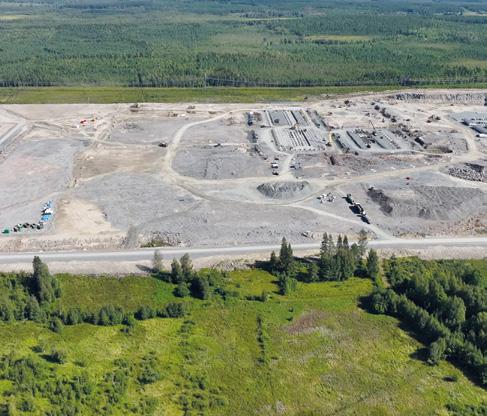
When water is integrated from the beginning of project design, two outcomes follow:
1. Safety and Comfort for Investors
ʞ Early accountability builds trust.
ʞ A full flow sheet process wrap and performance guarantee provide confidence, especially for early-stage firms without large-scale infrastructure experience.
ʞ Developers can focus on their core innovation, not water complexity.
2. New Avenues for Capital
ʞ By carving out a standalone Water Island entity, we create structures attractive to infrastructure and water-focused investors.
ʞ Shifting 5–15% of project capital from CAPEX to OPEX can unlock bankability.
ʞ Long-term investors respond positively to this structure.
Table 5: Outcomes of Successful Water Integration
SAFETY & COMFORT
guarantees, investor trust CAPITAL ACCESS OPEX shift, new financing channels, long-term investors








Energy efficiency, enabling decarbonization
With a broad range of high-pressure pumps and energy recovery devices, Danfoss offers you the highest energy efficient solutions for your next membrane-based desalination and wastewater plant. Solutions with a positive effect on the climage change.
Conclusion: Water as Core Infrastructure
Industrial water outsourcing sounds simple in theory but proves difficult in practice, largely because of a flawed assumption: that water sits outside the core industrial process. In reality, water must be developed, constructed, and operated in lockstep with that process. Once we accept this, a new set of opportunities emerges — positioning water as a strategic asset that helps projects cross the valley of death and reach commercial operation.

About the Author
Devesh Sharma is the Managing Director of Aquatech – a global leader in water purification technology for industrial and infrastructure markets. Established in 1981, Aquatech helps some of the world’s most recognized companies solve their water scarcity challenges by providing solutions in desalination, wastewater reuse and zero liquid discharge.
Devesh has been with Aquatech since 1997 and he has worked in virtually every facet of the company from commissioning to process engineer, project manager and business development manager. From 2006 to 2013, he was responsible for
For industry to succeed in an era of permanent water stress, decision makers must bring water to the table early. With the right partner, water is not merely managed; it becomes a foundation for resilience, finance, and long-term value creation.
But this shift requires more than industry buy-in. The water sector itself must change its self-perception — no longer as a peripheral input and output, but as an integral part of the industrial world.
Aquatech’s business activities in Asia. As Managing Director, Devesh has been focused on overall management of the company’s operations and implementing Aquatech’s vision to be the premier water solutions provider for industries worldwide.
Devesh holds a degree in Chemical Engineering and Industrial Management from Carnegie Mellon University, and an MBA from INSEAD. He is on the Board of Directors for the American Middle East Institute and was on the Board of Directors of the International Desalination Association from 2013-2015.

EXECUTIVE VIEWPOINT
BUILT FOR COMPLEXITY: A NEW MODEL FOR INDUSTRIAL WATER IN THE GLOBAL SOUTH
By Mr. Anurag Bajpayee, Co-Founder & CEO, Gradiant
When mobile networks spread across Africa, they did something astonishing: they skipped the landline era entirely. The Global South didn’t need to replicate what Europe or North America had already built—it leapfrogged to a new model of connectivity.
Industrial water today stands at the cusp of a similar leap. The Global South faces accelerating industrialization but lacks the water infrastructure that underpins modern economies. Instead of copying the slow, capital-intensive utilities of the West, the region has the chance to build something fundamentally different: decentralized, modular, and digitally intelligent systems that thrive in volatility.
This is not just about managing scarcity. It is about seizing a generational opportunity to build water infrastructure that powers industrial growth, attracts investment, and fuels economic transformation. Companies such as Gradiant, equipped with advanced technologies like SmartOps AI, high-recovery wastewater recycling, and resource recovery are ready to enable this leap.
Why Industrial Water Matters for the Global South
Water is not just a humanitarian issue—it is the foundation of industry. From textiles in Bangladesh to pharmaceuticals in India, from food processing in Nigeria to semiconductors in Vietnam, reliable access to water and wastewater management is essential for economic growth. Factories cannot run without it. Investors will not commit without it.
And yet, the reality is stark:
• Nearly half of households in major cities across the Global South lack piped water connections.
• Existing utilities lose up to 60% of treated water through leakage or theft.
• Political constraints prevent cost-recovery pricing, leaving utilities underfunded and unable to expand service.
• Industrial zones and informal settlements are frequently bypassed in favor of wealthier districts.
The result is that households with the least means pay the most for water—sometimes 10–15% of income—and industries face shutdowns or are forced into costly private supply. Without resilient industrial water infrastructure, the very foundation of industrial growth remains shaky.
But where many see crisis, there is also opportunity.
The Leapfrog Model: Modular, Hybrid, AI-Driven.
Just as Africa bypassed landlines, the Global South can skip the slow and costly build-out of centralized water utilities. A new model— hybrid, modular, and digitally intelligent—is already emerging.
Demand Reduction through Hybrid Systems.
By reusing water at the facility, building, or district level, hybrid systems can cut demand on municipal supplies by 90–95%. In India and the Middle East, industrial parks already use advanced reuse systems to supply factories with process water—creating resilience independent of fragile municipal grids.
Gradiant’s proprietary treatment technologies enable reuse at extraordinary efficiency, allowing industries to recycle wastewater streams into high-quality process water. This not only reduces strain on cities but also secures supply for companies under pressure to meet sustainability commitments.
Modularity and Flexibility.
Prefabricated treatment units can be shipped, installed, and adapted rapidly. If power cuts, they adjust. If water quality swings, they recalibrate—whether through membrane filtration, selective ion removal, or advanced oxidation. This agility allows industries to grow without waiting for multi-decade infrastructure projects. Gradiant’s modular systems are designed to scale with demand, enabling industries from textiles to semiconductors to expand production without delays tied to municipal expansion.
AI-powered water infrastructure can unlock industrial economies built on resilience and autonomy.
AI-Powered Performance Management Systems.
The real leap comes from digital intelligence. With IoT sensors, digital twins, and AI-driven control, operators gain predictive visibility and autonomous optimization. SmartOps AI, Gradiant’s platform for autonomous operations, is already enabling industrial water systems to:
• Anticipate disruptions before they occur.
• Optimize chemical dosing and energy use in real time.
• Self-correct when inputs vary, ensuring continuity even in volatile conditions.
This is where the analogy to mobile networks is strongest. Just as Africa’s mobile phones created not just connectivity but entire ecosystems of commerce, AI-powered water infrastructure can unlock industrial economies built on resilience and autonomy.
Proof Points from the Global South
The leapfrog model is not theoretical. It is happening today:
• India: The country has some of the toughest Zero Liquid Discharge (ZLD) regulations in the world—and unlike in many regions, they are being actively enforced. This has made India a real proving ground where industries like semiconductors and pharmaceuticals depend on advanced reuse. Gradiant is there, delivering high-recovery ZLD systems that keep factories running and supply chains resilient.
• Middle East: With no natural freshwater, the region relies on large-scale seawater desalination as the only viable source. Modular reuse and desalination units anchor industrial
growth, and Abu Dhabi is driving toward 100% water reuse to secure its future.
• Bangladesh: In Mymensingh, decentralized industrial water systems with shared governance between industries and regulators have proven more durable than top-down approaches.
• Secondary Cities: Free of entrenched legacy infrastructure, cities in Southeast Asia and Latin America are pioneering modular, digital-first industrial reuse systems that achieve up to 99% circular wastewater reuse— levels rarely achieved in the West.
Each example underscores the same lesson: when designed for volatility, industrial water infrastructure becomes an enabler of growth rather than a constraint.
Why This Is a Leapfrog Opportunity
The Global South can use the absence of legacy systems to its advantage. By embracing


modular, decentralized, and AI-driven water infrastructure, countries can:
• Secure Industrial Growth: Reliable water enables factories to run continuously, attract foreign direct investment, and create jobs.
• Enhance Resilience: Flexible systems can ride through volatility rather than collapse under it.
• Unlock Circular Economies: Reuse and resource recovery reduce costs while creating new value streams.
• Avoid Legacy Lock-In: Freed from outdated utilities, countries can build agile, future-ready infrastructure from the start.
This is about gaining a competitive edge. Where Western economies must retrofit and struggle against legacy systems, the Global South can leap ahead with digital-first infrastructure.
AI and Autonomous Operations: The True Game-Changer
At the heart of this leapfrog model is artificial intelligence. SmartOps AI transforms water infrastructure from a
reactive, operator-dependent system into an autonomous, learning ecosystem.
• Digital twins allow operators to simulate scenarios, stress-test resilience, and plan for rapid industrial growth.
• Predictive analytics prevent failures before they occur, slashing downtime and costs.
• Autonomous control loops allow plants to adjust in real time to shifting feedwater quality, chemical availability, or energy supply.
In regions with lean technical workforces, AI is not just an efficiency boost—it is the enabler of viability. Without SmartOps AI, industrial water plants risk collapsing under complexity. With it, they can thrive despite it.
For the Global South, this is not optional. It is the only model that scales.
Complexity as a Competitive Edge
In the Global South, unpredictability is not a flaw—it is the design requirement. Countries that embrace this reality will unlock the next wave of industrial growth.
Just as Africa’s mobile revolution gave rise to mobile banking and entirely new industries,
the leapfrog in water infrastructure can catalyze industrial ecosystems. From textile hubs in South Asia to electronics clusters in Southeast Asia, from pharmaceuticals in Latin America to agribusiness in Africa, the ability to secure resilient industrial water will determine which economies attract investment and accelerate development.
Meanwhile, the developed world—burdened by rigid legacy infrastructure—will struggle to adapt. The Global South can lead.
The Road Ahead
• Centralized, Western-style utilities fail under the volatility of the Global South.
• Hybrid, decentralized systems can reduce municipal demand by up to 95%.
• Modular technologies deliver resilience against variable water and power conditions.
• AI-powered performance management systems transform operations into predictive, autonomous ecosystems.
• Community-driven governance and secondary city adoption create scalable models.
Conclusion
Water in the Global South is not simply a crisis to be managed. It is a generational leapfrog opportunity—an inflection point that can accelerate industrialization just as mobile networks transformed communications across Africa.
The technologies exist. The models exist. Companies such as Gradiant, with innovations like SmartOps AI, are already deploying these solutions in some of the most complex and remote operating environments on earth.
Those who design for complexity, not against it, will lead. Those who embrace hybrid, modular, and AI-powered infrastructure will thrive. And those who seize this moment will not only secure their water futures but also unlock a disruptive new chapter in industrial development—one that the rest of the world may one day follow.

About the Author

Anurag Bajpayee is the Co-Founder & CEO of Gradiant, a global leader in advanced water solutions. With a Ph.D. in mechanical engineering from MIT, he has guided Gradiant from a campus start-up to the industry’s first unicorn, partnering with Fortune 100 companies worldwide. His mission remains simple: to ensure water for generations to come. Learn more at gradiant.com.

EXECUTIVE VIEWPOINT
THE MEGAPROJECT MINDSET: BUILDING LARGE-SCALE RESILIENT WATER SYSTEMS
By Mr. Matteo Buzzetti. CSC costruzioni General Manager, FISIA General Manager
In an era where climate change and rapid urbanization are placing increasing pressure on global water infrastructure, the ability to design and implement large-scale, resilient systems has become a strategic priority. This requires more than engineering excellence. It calls for a megaproject mindset: a systemic, integrated approach focused on sustainability and long-term impact. This is the vision that has guided Fisia Italimpianti, a company within the Webuild Group, for over a century as a global leader in water treatment and management.
The megaproject mindset is not limited to the physical scale of a project. It involves a way of thinking that addresses environmental, social, and technological challenges in a coordinated way. It means building water infrastructure that not only responds to immediate needs but also creates the foundation for long-term resilience. This approach is grounded in engineering innovation, strong project management, and, above all, a deep understanding of the needs of local communities and their environments.
One of Fisia Italimpianti’s key strengths lies in combining its century-long expertise in
the water sector with Webuild’s megaproject approach. The company benefits from the Group’s technical capabilities, skilled workforce, supply chain network, and financial strength.
Founded in 1926, Fisia Italimpianti has built an international reputation based on innovation, expertise, and the ability to operate in complex environments. Over nearly a century of activity, it has delivered water infrastructure projects in
With rising mineral prices and growing demand, continued innovation in materials and system design could make mineral recovery from brine a compelling part of a sustainable future.
more than 50 countries, making a significant contribution to water development in some of the world’s most arid, densely populated, or industrially strategic regions.
From its earliest major projects, such as the Jebel Ali desalination plant in the United Arab
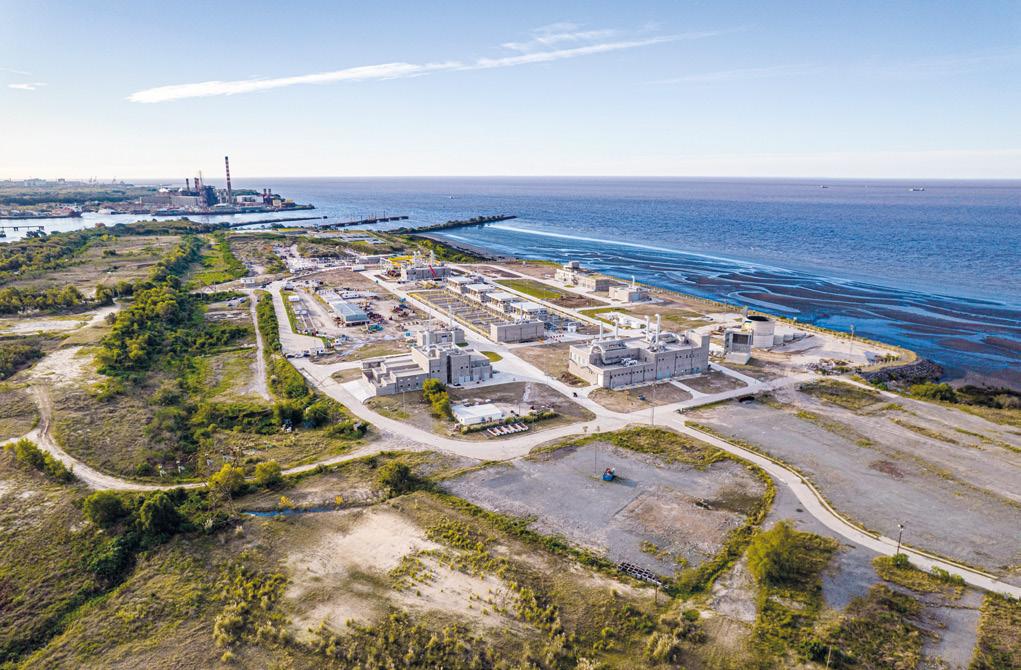
Emirates — then the largest in the region and one of the most important in the world — Fisia Italimpianti has consistently shown its ability to tackle extreme water challenges with large-scale industrial solutions. This plant marked a turning point in freshwater production in the Middle East, providing a vital resource for millions of people and enabling the growth and development of Dubai.
Fisia Italimpianti's plants serve more than 20 million people each day around the world, thanks to an installed desalination capacity of approximately 4.5 million cubic meters per day. Its wastewater treatment facilities, either completed or under construction, cover the needs of over 9 million population equivalents.
The expertise gained over the years, from early desalination plants to today’s advanced, integrated treatment systems, forms the solid foundation that allows Fisia Italimpianti to take on the most complex challenges. This legacy is reflected in advanced design capabilities, operational flexibility, and a long-term commitment to sustainability.
These strong foundations are clearly demonstrated in one of Latin America’s most ambitious water projects: the Riachuelo System in Argentina. This project highlights Fisia Italimpianti’s ability to design, build, and manage large-scale water infrastructure. Backed by the World Bank for its environmental impact, the Riachuelo Project is one of the
largest environmental remediation efforts in Latin America. Fisia Italimpianti plays a leading role in this major initiative, which focuses on cleaning up the Matanza-Riachuelo Basin, one of the most polluted in the world and located in a densely populated area of Buenos Aires.
At the core of the project is the wastewater pre-treatment plant, known as Lot 2, which was designed and built by Fisia Italimpianti. The plant has a treatment capacity of more than 2.3 million cubic meters per day, with an average flow of 27 cubic meters per second. It is designed to significantly improve the quality of wastewater before it is released into the Río de la Plata. This highly advanced facility includes mechanical treatment lines, sophisticated control systems, and a long-term environmental vision.
The project is divided into three main components. It includes a network of collectors and tunnels that transport wastewater to the treatment plant (Lot 1), as well as a 12-kilometer outfall tunnel for the final discharge of treated water. This tunnel, built
by Webuild using a Tunnel Boring Machine (TBM) under complex hydrogeological conditions, was excavated about 40 meters below the riverbed and has an internal diameter of 4.3 meters. It returns the treated water to the Río de la Plata through a system of 34 vertical risers that ensure controlled dispersion. This technological innovation was recognized with the ITA International Tunneling Award in 2021.
The Riachuelo System is an ambitious, integrated project where water resource management, environmental engineering, and technological innovation come together with a single goal: to restore life and quality to an urban water system that has been compromised for decades. Once fully operational, this megastructure will improve sanitation conditions for 4.3 million people and extend access to the sewage network to an additional 1.5 million residents.
This is a highly complex project that requires an interdisciplinary team to develop the engineering and specifications for around 350 electromechanical components sourced from nine different countries. Among these are

16 centrifugal pumps, each with an average capacity of 4.5 cubic meters per second. To ensure the project was delivered on time and in a coordinated manner, intense supply chain management was essential. This included overseeing production, factory testing, delivery to the construction site, assembly, and operational testing.
In conclusion, building large-scale resilient water systems means more than just designing, constructing, and operating infrastructure. It means thinking big in the most literal sense,
placing people at the center, regenerating ecosystems, and designing for a sustainable future. Fisia Italimpianti embodies this strategic vision and does so with the support of the Webuild Group, which once again this year confirms its position as the world leader in the water sector in the ENR (Engineering News Record) ranking, the leading global industry magazine. The Group, which has held the top spot in the Water Top 250 International Contractors ranking for over a decade, also rises to 13th place globally, confirming the solidity of its industrial model
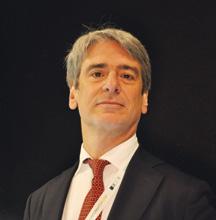
About the Author
Matteo Buzzeti Senior executive with extensive experience in the water and infrastructure sectors, specializing in EPC projects, water desalination, and sustainable resource management. Proven leadership in managing large-scale operations, driving business growth, and overseeing corporate governance.
Since 2008, part of Webuild Group S.p.A., currently serving as Vice President of Operations Subsidiaries and General Manager of Fisia Italimpianti S.p.A., a leading EPC contractor in water desalination, water treatment, and sustainable waste management. Board Member of NBI S.p.A. (industrial and civil infrastructure projects) and General Manager of
CSC Costruzioni SA, where he led the company's growth from €60 million to over €200 million in turnover. Also serves as Board Member of Renovation Palais des Nations SA (supervising the €500 million renovation of the UN headquarters in Geneva).
Previously held key roles in major water and infrastructure projects, including Design Manager for the €600 million Bujagali Hydroelectric Power Project in Uganda and Construction Supervisor for the MOSE project in Venice. Also played key roles in the Doha Metro (Red Line North, €2 billion) as Technical Director and the Copenhagen Metro (Cityringen Metro, €2 billion) as Engineering Manager.


EXECUTIVE VIEWPOINT
DATA, DESALINATION, AND DECARBONIZATION: NAVIGATING THE WATER–ENERGY NEXUS
By Mr. Nizar Kammourie, Chief Executive Officer of SAWACO Water Group
A New Paradigm for Water Security
The intertwined challenges of water scarcity and climate change are defining the 21st century. For decades, desalination has been a critical, albeit energy-intensive, solution to water stress, transforming coastlines in regions from the Middle East to California into vital sources of freshwater. However, the conventional model of desalination is now at a critical inflection point. The escalating climate crisis demands a radical reduction in carbon emissions, while the explosive growth of digital infrastructure—particularly energyand water-intensive data centers—places unprecedented strain on the very resources desalination aims to secure.
Navigating this intensified water-energy nexus requires more than incremental improvements; it demands a paradigm shift. The solution lies in harnessing the power of data. Advanced digital technologies— including artificial intelligence (AI), machine learning (ML), the Internet of Things (IoT), and digital twins—are no longer peripheral add-ons but core components for designing,
operating, and sustaining the next generation of desalination facilities. This article explores how data-driven strategies are essential to achieving the dual imperatives of water security and decarbonization.
We need to treat data as a critical utility— just like water and power—because it’s the bridge between operational performance and sustainability.
the members of IDRA, together with our partner organizations, bring practical experience, expertise, and a knowledge base that fuel new innovations.
Introduction: The Trilemma of Water Security
Water scarcity has evolved from a regional challenge to a global crisis. The World Resources Institute estimates that by 2025, two-thirds of the world's population may face water-stressed conditions. In response,
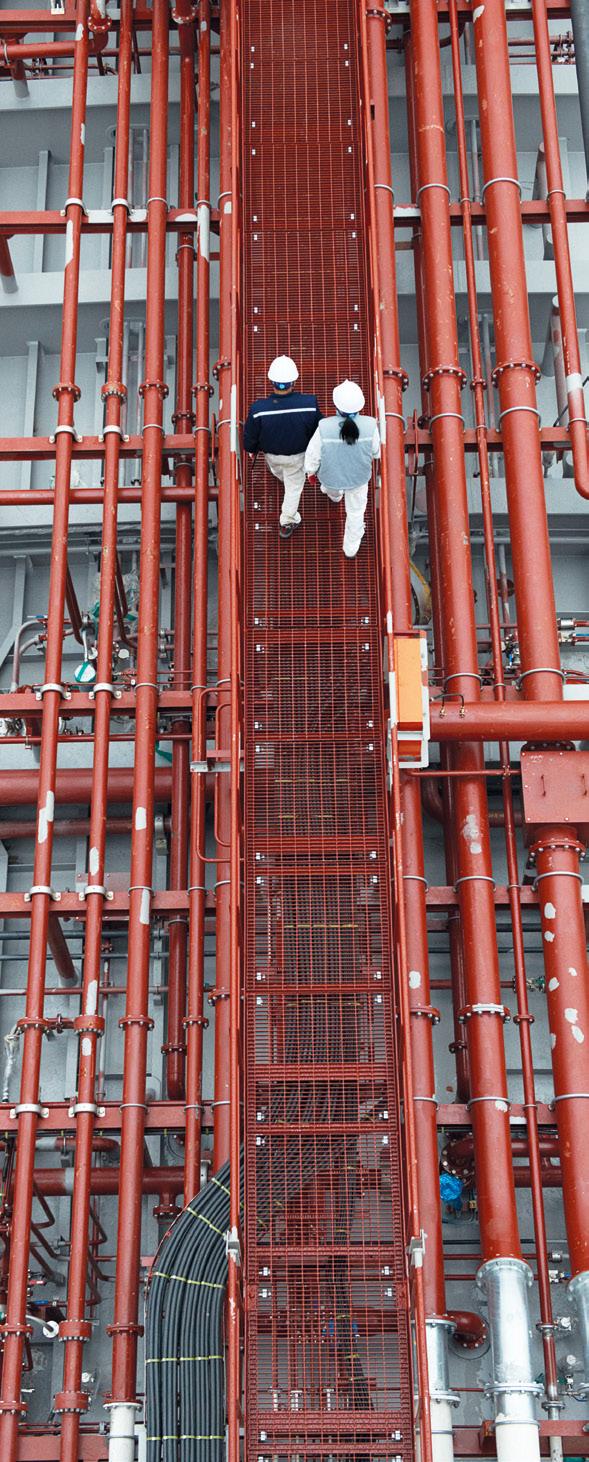
desalination capacity has expanded exponentially—from 45 million m³/day in 2005 to over 100 million m³/day today. Yet this growth trajectory occurs against the backdrop of climate commitments requiring deep decarbonization across all industrial sectors.
The Middle East, producing approximately 70% of the world's desalinated water, has long demonstrated desalination's viability at scale. Similarly, California's expanding desalination infrastructure—from Carlsbad to the proposed Huntington Beach facility— reflects the technology's growing acceptance in developed economies. However, traditional desalination operations consume 3-4 kWh per cubic meter of freshwater produced, creating a paradox: meeting immediate water needs while potentially exacerbating long-term climate vulnerabilities.
This challenge is further complicated by the rapid proliferation of data centers, which simultaneously increase both electricity demand and cooling water requirements. The International Energy Agency projects that data center electricity consumption will double by 2030, intensifying competition for both energy resources and freshwater supplies.
Energy Consumption Meets Digital Demand
The fundamental challenge of modern desalination, particularly reverse osmosis
(RO), is its significant energy footprint. The high pressures required to separate salt from seawater are inherently energy-intensive, accounting for up to 30-40% of a plant's total operating costs and making it a substantial contributor to greenhouse gas emissions, especially when powered by fossil fuel-based grids.
This long-standing issue is now compounded by the voracious appetite of the digital economy. Data centers, the backbone of our increasingly connected world, require vast amounts of energy to power servers and even more water for cooling. This creates a challenging feedback loop: we need more data to optimize our systems, but the infrastructure for that data requires more energy and water, further stressing the grid and water supplies that desalination plants depend on. In this new reality, a desalination facility is not just a water utility but a key player in a complex ecosystem of energy grids, industrial users, and digital infrastructure. Operating efficiently is no longer just a matter of cost savings—it is a strategic necessity for regional resource stability.
The Digital Revolution in Desalination: From Reactive to Predictive Operations
The key to resolving this dilemma lies in transforming desalination plants from static, mechanically controlled systems into dynamic, intelligent, and predictive operations. This is where data-driven technologies create profound value.
1. AI-Powered Process Optimization:
Artificial intelligence and machine learning algorithms can analyze immense, real-time datasets from hundreds of sensors across a plant—monitoring pressure, flow rates, temperature, water quality, and energy consumption. By identifying complex patterns imperceptible to human operators, AI can determine the optimal operating setpoints for any given moment. This continuous adjustment minimizes energy consumption per cubic meter (kWh/m³) of produced water, directly reducing both operational expenditures and the plant's carbon footprint.
Instead of relying on reactive, calendar-based cleaning schedules, predictive analytics uses historical and real-time data to forecast when a membrane is about to foul.
2. Predictive Maintenance and Asset Management:
One of the most significant operational challenges in desalination is managing membrane health, particularly fouling and scaling, which degrades efficiency and increases energy demand. Instead of relying on reactive, calendar-based cleaning schedules, predictive analytics uses historical and real-time data to forecast when a membrane is about to foul. This enables proactive, precision maintenance—optimizing chemical dosing,
scheduling cleaning cycles exactly when needed, and extending asset life. The result is reduced downtime, lower chemical costs, and sustained energy efficiency.
3. The Rise of the Digital Twin:
Perhaps the most powerful tool in this new arsenal is the digital twin—a virtual, dynamic replica of the physical desalination plant. Fed by real-time IoT data, the digital twin simulates the plant's behavior under a wide range of conditions. Operators can use it to:
• Test and de-risk new operational strategies without impacting the live facility.
• Train personnel in a hyper-realistic virtual environment.
• Simulate the impact of external variables, such as fluctuating energy prices or changes in seawater quality, allowing for proactive planning.
• Achieve holistic plant optimization, balancing the performance of individual components to maximize the efficiency of the entire system.
Decarbonization Pathways Enabled by Data
Data-driven optimization is the most direct route to decarbonization through enhanced energy efficiency. However, its most transformative impact may be its ability to integrate desalination with renewable energy sources.
The intermittency of solar and wind power has historically been a barrier to their use in powering baseload operations like desalination. Intelligent plant management systems, governed by AI, can overcome this.
These systems can dynamically manage plant operations based on renewable energy availability and grid pricing. For instance, a plant can be programmed to operate at maximum capacity when solar or wind energy is abundant and cheap, producing and storing surplus water. When renewable output wanes, the plant can ramp down its operations, relying on its stored water to ensure a consistent supply. This data-driven flexibility not only decarbonizes the desalination process but also transforms the facility into a valuable, flexible load that can help stabilize the energy grid.
The Path Forward: A Call for Policy, Investment, and Collaboration
Realizing this vision of a data-driven, decarbonized water future requires a concerted effort beyond the technical sphere.
• Policy and Regulation: Governments and international bodies must create regulatory frameworks that incentivize the adoption of these digital technologies. This includes setting performance standards for energy efficiency and carbon intensity in new desalination projects and offering financial incentives for retrofitting existing plants.
• Strategic Investment: The upfront cost of digital infrastructure—sensors, software, and data analytics platforms—must be viewed not as an expense but as a high-return investment. The long-term ROI is realized through significant reductions
in energy and chemical costs, enhanced operational resilience, and extended asset longevity.
• Cross-Sector Collaboration: The water-energy nexus cannot be navigated in silos. True progress requires deep collaboration between water utilities, technology providers, energy companies, and policymakers. This ecosystem approach is essential for developing integrated solutions that optimize resources across entire regions.
Conclusion: An Imperative for a Resilient Future
The pressures on global water and energy systems are intensifying, driven by
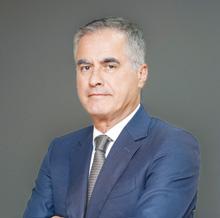
About the Author
Nizar Kammourie is the Chief Executive Officer of SAWACO Water Group, a pioneering private water utility in Saudi Arabia. With extensive experience in civil engineering, mathematics, and business development, Kammourie has been instrumental in establishing SAWACO as a leader in innovative desalination and water distribution solutions. Under his leadership, SAWACO has expanded its operations and engaged in significant projects, including the world’s largest Independent Water Project, Rabigh-3 IWP.
Kammourie is deeply committed to sustainable practices
population growth, industrial demand, and digitalization. Desalination will remain an indispensable tool for ensuring water security, but it must evolve. The transition from a mechanically managed process to a digitally optimized one is no longer an option but an imperative. By embedding data intelligence into the core of desalination operations, we can meet the world's growing thirst for water without exacerbating climate pressures. This is the future of desalination—smarter, more efficient, and fundamentally sustainable. For the global water professionals gathered in Reykjavik and beyond, embracing this digital transformation is our shared responsibility and our greatest opportunity to build a truly water-secure and climate-resilient world.
in the water sector, aligning SAWACO’s strategies with the United Nations Sustainable Development Goals.
He focuses on expanding access to safe drinking water, improving water quality, and promoting sustainable water management practices. His vision extends to developing robust infrastructure, embracing technological advancements, and contributing to the development of sustainable cities and communities. Kammourie’s leadership in the water industry and his commitment to sustainability make him a valuable contributor to global efforts in addressing water-related challenges.

Interview with Felicia Marcus, William C. Landreth Visiting Fellow at Stanford University’s Water in the West Program
The Policy Architect: Replicating California’s Blueprint for Water Security
Q: From Emergency Response to Permanent Reform California's landmark groundwater management reforms and sweeping water recycling policies emerged in the aftermath of crisis. How did you move from managing emergency drought response to securing long-term governance structures? What structural shifts were critical?
A: Right before the drought was formally recognized, the Brown Administration brought together water agencies and departments to develop the California Water Action Plan. The goal was to address the serious threat climate change poses to our water system.
The plan identified ten essential steps, including but not limited to conservation,
recycling, desalination in appropriate circumstances, and managing groundwater basins so they could be used as critical storage to help us withstand increasingly frequent and severe dry years. So, when the drought struck, we accelerated elements of that plan as our roadmap and prioritized actions we needed to take, with groundwater management being a top priority.
A governance model emerged from broad consensus: because groundwater basins vary significantly, and because local ownership of the issue was essential for long term success, management was placed at the local level, with the state providing benchmarks and acting as a backstop if local agencies failed.
This approach was informed in part by “uncommon dialogues” hosted over the years by Stanford’s Water in the West program, which explored how best to manage groundwater if the political moment ever arrived. The drought provided the moment. The early groundwork, and other engagement with stakeholders, that had talked about the complexity of the structure, made the reforms more feasible. It is one of the reasons I respected the program and later welcomed the opportunity to serve as a Visiting Fellow after leaving the State Water Resources Control Board.
Q: Scaling the Human Right to Water into Policy
As Chair of the State Water Board, you championed placing the human right to safe water at the center of California’s drought response, alongside equity mandates and regulatory grantmaking. What were the toughest trade-offs, and how can other governments adapt this rights-based framing effectively?
A: This was a remarkable effort built over years of layered partnerships. Talented community activists organized and worked together to gain passage of the Human Right to Water policy in 2012, which was ultimately signed by Governor Brown after having been vetoed by the previous governor. While the law did not initially include implementation tools, it directed the State Water Board and other agencies to prioritize helping communities without reliable access to water.
Our original focus was on communities dependent on contaminated water. These problems stemmed largely from legacy agricultural practices such as nitrogen fertilizers, but also from naturally occurring contaminants like arsenic and Chromium-6, as well as pesticides and hazardous waste. The drought then highlighted an even harsher reality: entire communities with no water at all.
We took the challenge seriously. We set tough but flexible rules for our Irrigated Lands Regulatory Program to start to stem the tide of excess nitrogen contamination and directed grants and loans toward helping smaller communities secure technical assistance to even apply for our larger capital grants and loans which we also prioritized for them. We targeted our enforcement resources. Partnering with community groups, we also gained the authority to order consolidations of small systems, creating economies of scale that is necessary for water to be treated to modern standards, and we got the authority to help systems smaller than our usual regulatory limits. We moved from regulating small systems to also helping small systems.
In 2014 the legislature transferred the state health agency’s drinking water program to the State Water Board. The goal was to provide “one-stop shopping” for communities seeking grants, loans, technical help, and oversight on both drinking water and wastewater. It also centralized oversight of recycled water and made drinking water protection a larger part of and top priority for a smaller organization.
Although reorganizations often create disruption, this transition was unusually smooth thanks to a robust, inclusive
process with stakeholders. The bottom line: we made access to safe, reliable water our top priority. In the years since then, the State Water Board has enabled clean water for over 900,000 people who didn’t have it before.
The key is to make it a top priority and direct all relevant agencies to follow suit. Without political leadership this doesn’t always happen.
Q: Unleashing Reuse: Funding and Regulation
California invested over $1.5 billion in water recycling and streamlined its regulatory framework to accelerate potable reuse. How did this combination of funding and clarity catalyze investment? What lessons can emerging markets draw from California’s approach?
A: We did this for several reasons. Dozens of recycled water projects sat idle, agencies hesitated to move forward with planning projects because permitting depended on the views of individual permit writers, and water agency leaders asked us to. WateReuse California promoted legislation requiring us to set statewide reuse standards by specific dates so agencies could plan with certainty (this helps the agency to get the necessary funding for staff and studies through the budget process). Gary Darling of Delta
Diablo Sanitary Agency, who became my hero, had also done the research showing how many projects we could unleash by lowering interest rates on State Revolving Fund loans for a limited time.
We said yes to both because water recycling was the next major source of water available to build resilience against drought and climate change. We wanted to spark a paradigm shift, and the time was right. For those of us who had worked in recycled water for decades, it was the moment to seize.
The rules, developed through a robust stakeholder process and expert panels, provided both a roadmap and third-party validation of safety. Although tough, they gave certainty that unlocked major projects now advancing in Southern California, especially Los Angeles and San Diego, building on Orange County’s pathbreaking leadership.
The greatest advice: set up a strong regulatory framework, engage people, and add funding whenever possible.
Q: Beyond Infrastructure: The Power of Data Transparency California pioneered open water-use data and real-time transparency tools. How did that shift public behavior and government accountability? And what are the first steps countries can take to invest in similar systems?
A: This is still a work in progress and varies across agencies. We learned valuable lessons by diving into the open data world, whether through partnering with OpenET or opening access to our data in Open Data challenges, where we discovered that drought conservation mandates actually saved more energy than the state’s formal energy programs. We also endeavored to put everything we could online and available.
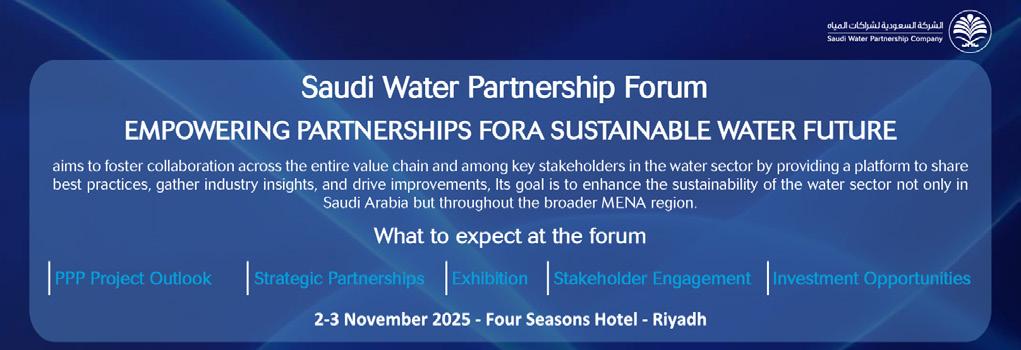
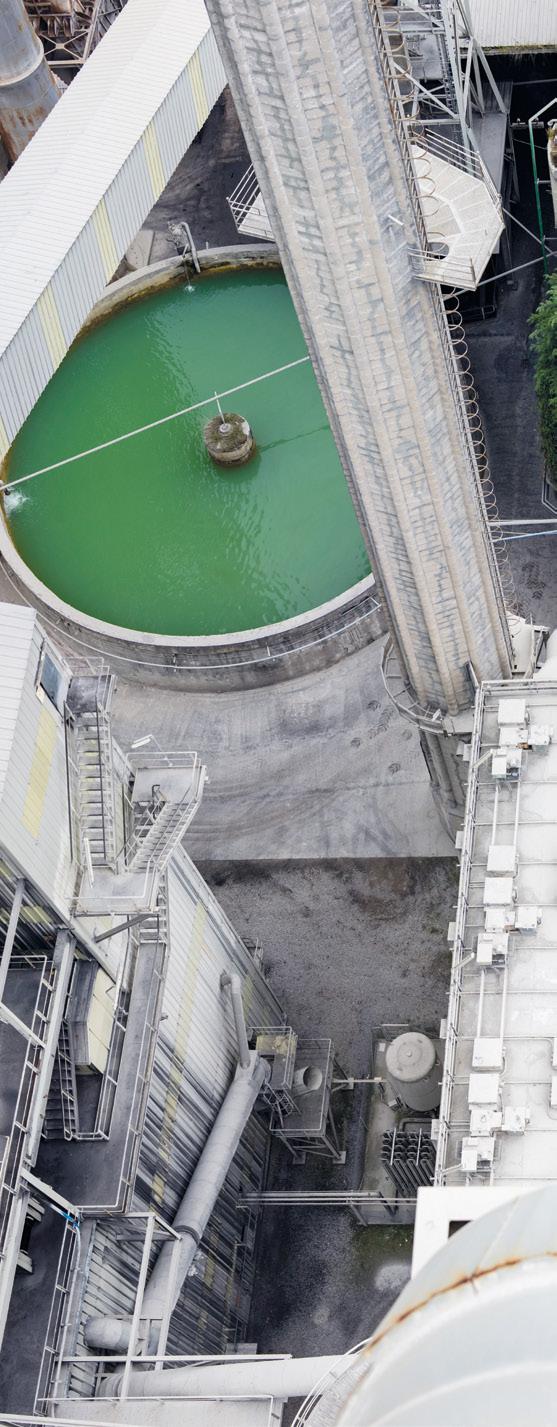
Another step came when the legislature, led by Senator Dodd, created the nonprofit California Water Data Consortium. Including multiple agencies and non-governmental stakeholders ensured the effort was not dominated by one or two government bodies. This structure brought greater transparency and dynamism. Getting it online is one thing—helping make it accessible takes work. The consortium has created a great focal point for multiple agencies and the public, but it is a big lift to make it coherent and accessible and useful to people. It is a work still in progress and one has to deal with a variety of agency cultural norms, with some preferring to hold their data close and others favoring open access. We found that opening access helped build relationships but also helped others give us all insight. For example, one open data challenge yielded a finding that our drought emergency water conservation rules saved more energy than all of the formal state energy conservation programs combined.
Q: Integrating Land Use, Climate, and Watershed Health
At Stanford, you’ve explored how climate action, nature-based solutions, and land use planning intersect with water policy. From wetlands restoration to managed aquifer recharge, what models should water ministries adopt to build resilience across sectors?
A: I have not seen a strong model for integration, only isolated examples where communities chose to connect issues that clearly belong together. Integration is ultimately a leadership decision. Too often, we silo problems because of professional boundaries or political sensitivities, such as the link between water and land use.
Water ministries should establish structures that foster or even require integration. Some states compel land use agencies to coordinate with water agencies or require developers to demonstrate an assured water supply before approving projects. Most do not. In my experience, bridging organizational divides usually requires higher authority—sometimes legal mandates, more often leadership expectations.
During the Clinton Administration, when I served as a Regional Administrator of the USEPA, we were expected to meet frequently with counterparts and resolve issues. The same was true in Los Angeles under Mayor Tom Bradley. Choosing collaboration over competition is ultimately a leadership choice.
My colleagues and I in the Water Policy Group issued a report prior to the UN Water Convention in 2023 that suggested not only that water be elevated on the UN agenda but that water should be a part of
every agenda. The problem is that water is isolated, taken for granted, and not given the same attention as, say, energy. There is more money made and geopolitical attention to the latter. And yet, water is essential for life and the economy. My whole career has revolved around elevating water intelligibly in the public eye in some way or another.
Q:Looking Ahead to 2026
As the world prepares for the 2026 UN Water Conference, what governance reforms should take center stage?
A: I would prioritize highlighting innovations that inspire creativity, but I also see value in setting benchmarks for what sound water policy should look like, even if the specifics vary by country. My colleagues at the Water Policy Group (waterpolicygroup. org) have proposed that the UN convene a broad-based coalition to develop policy “scaffolding” through a collaborative process.
Such scaffolding could provide countries with a roadmap or menu of options, establish expectations for effective policy, and offer practical guidance on strengthening water management. It could also help align governments and stakeholders around shared goals, while allowing flexibility for local realities. By combining inspiration from innovation
with the clarity of agreed benchmarks, countries would have both motivation and structure to move toward stronger water security. The result could be a more consistent global framework that still respects diversity in context and approach.
Q: Leadership in a Time of Polarization Water decisions are becoming increasingly politicized, even as science and urgency grow clearer. In your experience, how can water leaders maintain credibility and forge consensus in divided political environments?
A: Again, leadership matters. Some water leaders are truly community leaders (and community can be defined more broadly than local), and others are politicians more devoted to maintaining their positions and exploiting differences rather than bringing people together to solve problems. This ebbs and flows based upon the times and upon the individual personalities that emerge. Elevating water issues, and adaptation in particular, is essential so we aren’t just talking to ourselves within the water world. This does involve engaging in the policy and political sphere, which
energy and other worlds do far more successfully.
Q: Global Transferability: What Doesn’t Translate?
Many leaders look to California as a model, but the state also has unique legal, financial, and institutional assets. Where do you think California’s experience doesn’t apply, and how should others adapt it to fit their own constraints?
This is a critical point. Israel and Singapore are highly instructive, even reassuring, but their models cannot be transferred wholesale to California. Both, along with Australia to some extent, have greater consolidation and regulation of water agency pricing, stewardship, and oversight. California, by contrast, has a profusion of largely unregulated local water agencies - over 80 percent in the public sector - regulated mainly for quality, and more recently, limited planning and conservation. We have learned alot from them (e.g., advancing recycling) but can learn more. We relied heavily on Australia’s experience in the millennial drought and moved rapidly to employ dramatic urban

water conservation at their suggestion so that we wouldn’t be caught flatfooted if our drought had lasted a decade. That was disruptive, but far less costly than it would have been had we had to build emergency facilities. Fortunately, it rained before we had to test that theory.
California’s history shows that we can excel in some areas while lagging in others. We have set ambitious standards for protecting water, air, and oceans, yet we remain behind in implementing protecting natural instream flows, our water rights system, and in developing adequate quantification to do either. Colorado, by comparison, leads in quantification but lacks some of California’s environmental protections. Europe surpasses the United States in

About the Interviewee
Felicia Marcus is currently the William C. Landreth Visiting Fellow at Stanford University’s Water in the West Program. Prior to joining Stanford, Felicia had a long career in government, the non-profit sector, and the private sector.
Felicia has been Chair of the California State Water Resources Control Board, Regional Administrator of the U.S. EPA Region IX, head of the City of Los Angeles’ Department of Public Works, Western Director at NRDC, EVP/COO of the Trust for Public Land, and a public interest and private sector attorney.
Most recently, when Chair of the State Water Resources Control Board she was in a key role during the 2012-2016
toxic chemical management, given its stricter approval and oversight systems.
The lesson is clear: no single model transfers perfectly, but each offers insights to choose from.
I’d also say that our ability to act stemmed from the political leadership and prioritization that Governor Brown brought. The California Water Action Plan, although short, brought together all of the agencies that worked on water, set a long term set of priorities for what had to change to respond to climate change, and said we will act. That created a roadmap we could accelerate in the drought, but it also made the agencies work together and told the stakeholders that we would move rather than debate things forever. Action was the most important word in the title.
then drought of record in developing the Sustainable Groundwater Management Act, historic urban conservation measures, challenging water rights decisions, developing a series of statewide water recycling standards and standards for desalination projects, developing programs to assist underserved communities with drinking water, and a variety of other programs.
She is currently working academically and as a consultant on issues including water recycling and resilience, naturebased solutions, protecting and restoring instream flows, water rights, groundwater management, international climate adaptation, and water justice.

EXECUTIVE VIEWPOINT
FROM LINEAR TO CIRCULAR: DIGITAL SOLUTIONS TRANSFORMING SUSTAINABILITY
By Mr. Luis Neves, CEO, Global Enabling Sustainability Initiative (GeSI)
As we confront urgent global challenges such as climate change, resource depletion, and environmental degradation, the transition from a linear "take-make-dispose" economy to a circular economy has never been more critical. The intricate relationship between water, energy, and carbon—often referred to as the water-energy-carbon nexus—requires transformative solutions that can enhance sustainability across various sectors. In this context, digital technologies stand at the forefront, enabling and accelerating resource circularity while driving better outcomes for both businesses and our planet.
Understanding the Shift: From Linear to Circular
The traditional linear model of consumption leads to significant waste and inefficiency. In contrast, a circular economy emphasizes the continuous use of resources, ensuring that products, materials, and energy are reused and regenerated rather than discarded. This shift not only conserves resources but also reduces environmental impacts, especially in crucial areas such as water management, energy production, and carbon emission reduction.
The Role and Power of Digital Technologies
Digital solutions are rapidly becoming the linchpin for advancing circularity in the water–energy–carbon nexus. Key technologies— including the Internet of Things (IoT), artificial intelligence (AI), big data analytics, and blockchain—are enabling organizations to optimize resource use, improve operational efficiency, and enhance decision-making.
blockchain can be employed to track the lifecycle of products, ensuring that materials are recycled and reused effectively, thereby promoting a circular economy.
1. Internet of Things (IoT): IoT devices facilitate real-time monitoring of resource flows across systems. In the water sector, for instance, smart sensors detect leaks in pipelines, reduce water loss, direct wastewater reuse, and ensure that water is used where and when it is needed most. In energy management, IoT
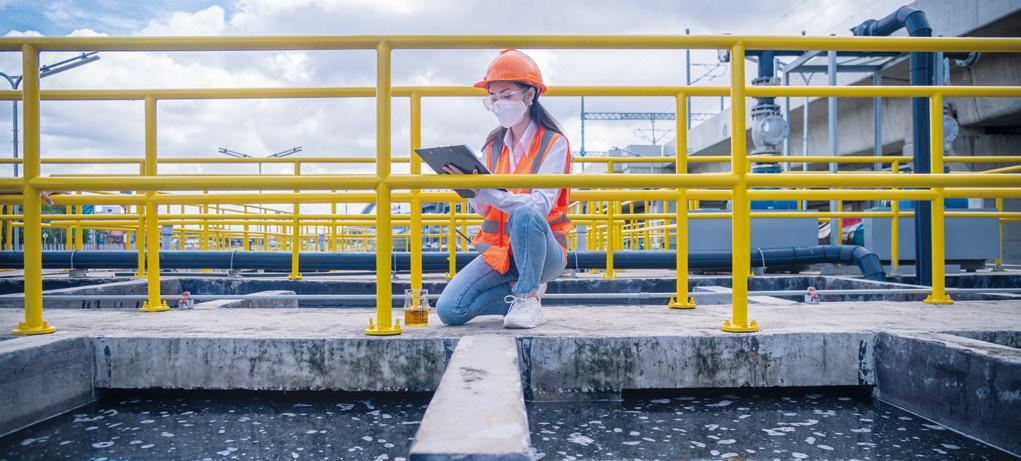
devices improve the efficiency of renewable energy sources, enabling better integration with traditional grids.
2. Artificial Intelligence (AI): AI algorithms analyze vast amounts of data to identify patterns and generate insights that inform more sustainable practices. For example, AI can optimize irrigation schedules for agriculture, balancing water use with crop needs while minimizing waste. In the carbon space, predictive analytics help companies understand their emissions and develop strategies for reduction. AI can also support capacity modelling for wastewater reuse.
3. Big Data Analytics: The ability to analyze large datasets allows organizations to track resource consumption patterns and identify opportunities for improved sustainability. For instance, big data can be used to optimize energy usage in buildings, ensuring that energy is consumed efficiently and minimizing reliance on fossil fuels.
4. Blockchain: This technology fosters transparency and traceability in resource management. For example, blockchain can be employed to track the lifecycle of products, ensuring that materials are recycled and reused effectively, thereby promoting a circular economy. In the context of water management, it can help verify the authenticity of water sources and ensure equitable distribution.
Real-World Applications: Bridging the Gaps
Several pioneering initiatives exemplify how digital solutions are enhancing resource circularity in the water-energy-carbon nexus:
·Sawaco: In Saudi Arabia, Sawaco has implemented innovative digital technologies in their desalination processes. By employing AI and IoT to enhance their operational efficiencies, Sawaco has successfully optimized water production and distribution
0while minimizing energy consumption. This initiative not only addresses critical water scarcity issues but also underscores the role of technology in advancing circular water management.
·NEC: NEC brings its expertise as a digital technology leader to support sustainability in the water sector. Through its precision agriculture platform CropScope, NEC not only optimizes fertilizer application but also minimizes irrigation water use, helping farmers grow more with less while reducing environmental impact. In addition, NEC has developed an AI-based tool that enables companies to assess local water risks anywhere in the world, supporting the recommendations of the Taskforce on Nature-related Financial Disclosures (TNFD). These innovations demonstrate how NEC applies digital intelligence to advance sustainable water management, ensuring that technology becomes a critical enabler of resilience for communities, industries, and ecosystems.
·T-Systems: As part of Deutsche Telekom, has deployed an advanced Smart Ground Water Monitoring system that leverages IoT sensors, data analytics, and cloud computing
to improve groundwater management. This solution enables real-time monitoring of groundwater levels, quality, and replenishment rates, providing essential data for sustainable water resource management.
·Google: Google is at the forefront of utilizing data analytics and AI to optimize energy efficiency across its data centers. The company has achieved significant reductions in energy consumption through machine learning algorithms that predict and manage cooling needs, minimizing both energy use and carbon footprint. This initiative not only demonstrates digital innovation but also showcases how tech companies can lead the way toward circular energy practices.
·IBM: IBM’s Green Horizons project exemplifies the integration of big data analytics and AI in tackling environmental challenges. By using advanced predictive analytics, IBM helps cities optimize their energy consumption and reduce emissions. In China, the initiative has successfully enabled numerous cities to predict air pollution levels and manage energy consumption more effectively, demonstrating the potential of data-driven solutions in creating a sustainable urban environment.

Challenges and Opportunities Ahead
While the potential for digital solutions to transform sustainability is immense, several challenges remain. The integration of digital technologies into existing systems requires investment and commitment from stakeholders at all levels. Cybersecurity must also be addressed to protect sensitive data and ensure the reliable functioning of interconnected systems.
Moreover, as we move toward a more circular economy, it is essential to foster collaboration among governments, businesses, and communities. By sharing knowledge and resources, we can create an ecosystem that supports innovation and accelerates the transition to circularity.
Conclusion: Embracing a Circular Future
As we prepare for the Reykjavik Summit on Water and Climate Change, the imperative to embrace circularity through digital solutions is clear. It presents a unique opportunity to not only address pressing environmental concerns but to bolster economic resilience and social equity. By leveraging technology to redefine resource management, we can forge a more sustainable future—one where water, energy, and carbon are viewed as interconnected elements within a resilient and regenerative system.
The journey toward a circular economy is complex, but with collective action and innovative thinking, we can transform challenges into opportunities and pave the way for lasting sustainability.
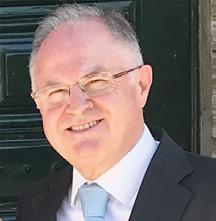
About the Author
Luis Neves is CEO of the Global Enabling Sustainability Initiative (GeSI) since 2017. Prior to that, from 20082017, Luis held the position of GeSI Chairman. Under Luis’ leadership, GeSI has become a globally recognized “thought industry leader” organisation in the field of ICT- sustainability with strong focus on the enabling role and positive contribution of digital technologies to climate protection.
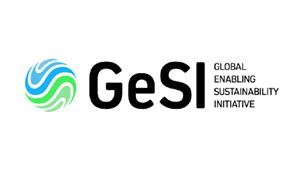
Before GeSI, Luis worked at Deutsche Telekom for over 15 years holding positions such as Head of Sustainable Development and Environment, VP of Corporate Responsibility and Chief Sustainability and Climate Protection Officer. Luis has also held positions and played relevant roles at European and international levels in organisations, such as the UN Global Compact Lead Group, Econsense -the German Sustainability Association, World Resources Forum Association and UNFCCC Momentum for Change Initiative.


SAVE THE DATE
IDRA – Arab Fund
High-Level Kuwait Colloquium on Water Finance and Scarcity Solutions
February 9–10, 2026 | Arab Fund Headquarters | Kuwait City
Investing in Water Security: A Lifeline for MENA’s Future
The International Desalination and Reuse Association (IDRA) and the Arab Fund for Economic and Social Development (AFESD) will convene governments, investors, and industry leaders for a high-level regional colloquium on Water Finance and Scarcity Solutions to unite public and private actors to accelerate investment in water security and infrastructure resilience across the Middle East and North Africa.
As the MENA region faces an unprecedented water crisis, with demand projected to exceed supply by 50% by 2030, the need for innovative financing, governance, and technology solutions has never been more urgent.
The Colloquium will explore how mobilize the needed capital for water investments over the next decade can transform scarcity into sustainability, resilience, and opportunity.
Key Themes
ʞ Financing scalable water projects through public–private collaboration
ʞ Integrating renewable energy into desalination and reuse systems
ʞ Building resilience in shared water basins and transboundary cooperation
ʞ Unlocking green finance instruments, including climate bonds and sukuks
ʞ Policy frameworks for sustainable water governance
Why It Matters
Water security is the foundation of regional stability, growth, and prosperity. This Colloquium will chart practical pathways to mobilize finance, strengthen partnerships, and secure the MENA region’s water future.
MAKING STRIDES IN THE RACE TO ADDRESS WATER SCARCITY
XPRIZE is thrilled to announce the visionary teams advancing to the next stage of the $119M
XPRIZE Water Scarcity competition, the largest incentive prize competition in history.
These pioneering teams are advancing breakthrough desalination technologies designed to reliably, affordably, and sustainably unlock access to Earth’s most abundant water source: seawater.
“Our hope is that this prize will make clean water equitably abundant, ensuring communities everywhere can thrive despite rising climate and population pressures. These teams have shown incredible promise to meet that audacious goal.”
Lauren Greenlee, Ph.D. | EVP of Food + Water + Waste | XPRIZE
Water scarcity already impacts billions worldwide, and by 2030, the world could face a 40% shortfall in clean water supply. These qualifying teams are proving that scarcity is not our destiny; it’s a problem we can address.

Explore the innovators racing to secure humanity’s water future at xprize.org/water.


XPRIZE WATER SCARCITY




Under the theme Driving Global Water
Sustainability Through Innovation, the 21st edition of the IDRA World Congress in 2026 convenes experts, decision-makers, and innovators to showcase the latest technologies, promote sustainable water development, and support global development goals.
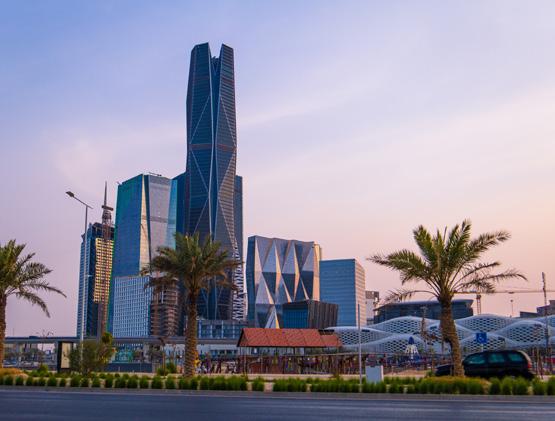

Call for Extended Abstracts IDRA World Congress 2026
Driving Global Water Sustainability Through Innovation
November 1–5, 2026 | Four Seasons Hotel, Riyadh, Saudi Arabia
The International Desalination and Reuse Association (IDRA) is pleased to announce the Call for Extended Abstracts for the 21st IDRA World Congress, to be held November 1–5, 2026, at the Four Seasons Hotel in Riyadh, Kingdom of Saudi Arabia.
For the first time in its history, the World Congress will convene in Saudi Arabia, under the patronage of the Ministry of Environment, Water, and Agriculture (MEWA) and hosted by the Saudi Water Authority (SWA). This milestone event reflects the Kingdom’s unparalleled role in shaping the future of water. As home to some of the world’s most ambitious desalination, reuse, conveyance, and renewable energy projects, Saudi Arabia embodies innovation at scale and demonstrates how national vision can achieve global impact.
A Global Platform for Knowledge and Collaboration
The IDRA World Congress 2026 will bring together scientists, engineers, regulators, policymakers, industry leaders, developers, and innovators from across the globe. Over five days, participants will engage in plenary discussions, technical sessions, workshops, and training programs designed to showcase the latest advances in desalination, water reuse, energy integration, digital transformation, and regulatory innovation. With the theme Driving Global Water Sustainability Through Innovation, the Congress will highlight breakthroughs in science and engineering, cross-border collaborations, and real-world
projects that demonstrate what is possible when ambition meets innovation.
Why Submit?
Extended abstracts selected for the program will be presented to a global audience of decision-makers and practitioners, offering authors a unique opportunity to:
• Share original research and applied case studies.
• Gain visibility among peers, policymakers, and industry leaders.
• Contribute to advancing solutions for the world’s most pressing water challenges.
Key Dates
•November 15, 2025 – Submission site opens
•January 15, 2026 – Extended Abstract
Submission Deadline
•February 15, 2026 – Notification of Acceptance
• April 1, 2026 – First Draft Manuscript Submission Deadline
How to Submit
Extended abstracts must be submitted through the IDRA Paper Management System at idrawater.org. Submissions will be evaluated by the Technical Program Committee based on originality, contribution to the field, technical rigor, and relevance to Congress themes.
For more information, please contact: papers@idrawater.org
To view the full CFEA please click here
TURNING INSIGHT INTO ACTION: IDRA
LAUNCHES NEW WHITE PAPERS
The International Desalination and Reuse Association (IDRA) continues to strengthen its role as the global voice for water reuse and desalination through the release of two major white papers that advance international collaboration, shape policy dialogue, and provide practical frameworks for accelerating water security.
Both publications — Initiating a Global Dialogue on Water Reuse and The Water Scarcity White Paper — were developed through extensive consultation with global partners, experts, and policymakers. Together, they present a unified call to action: scaling proven technologies and governance models to ensure water resilience in a rapidly changing world.
GLOBAL DIALOGUE ON WATER REUSE
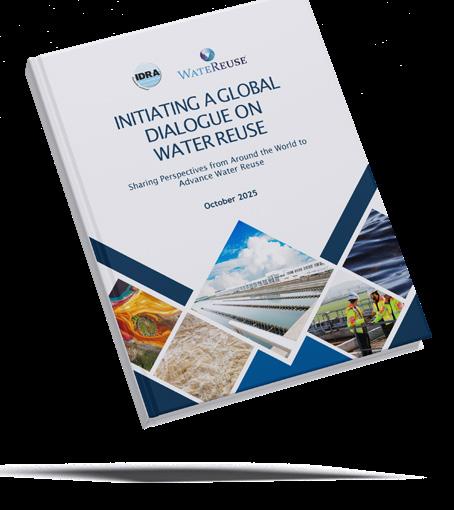
In partnership with the WateReuse Association, IDRA has released Initiating a Global Dialogue on Water Reuse, a landmark report that captures the outcomes of international workshops and panel discussions held in Denver and Abu Dhabi in 2024. The initiative brought together leaders from 18 countries, spanning utilities, regulators, financiers, and research institutions, to align global perspectives on the future of water reuse.
The white paper explores how governments and industries can overcome shared barriers such as fragmented policy, inconsistent public communication, and uneven access to finance. Through case studies and expert insights, it highlights how proactive governance, transparent communication, and community engagement are essential to building trust in reuse.
It also lays the groundwork for a continuing global collaboration effort, with plans for expanded regional dialogues, practical toolkits, and matchmaking mechanisms to connect countries and companies at different stages of implementation. The result is not only a snapshot of where the global reuse movement stands today, but also a forward-looking roadmap for its next decade.
Read the Global Dialogue on Water Reuse White Paper
WATER SCARCITY WHITE PAPER
Developed in collaboration with Boston Consulting Group (BCG), IDRA’s Water Scarcity White Paper reframes scarcity as a systemic global crisis that intersects with economic security, climate resilience, and social stability. It identifies ten transformative levers that can unlock resilient water systems at scale, from advanced reuse and energy-efficient desalination to digital infrastructure, AI-driven optimization, and nature-based solutions.
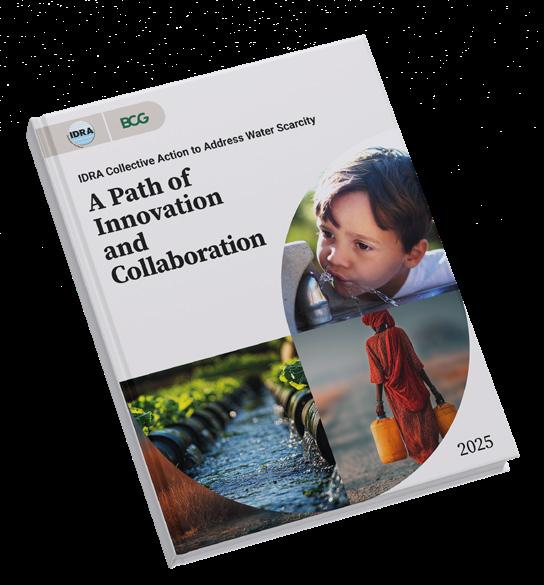
The paper calls for bold regulatory and financial innovation to accelerate adoption. It examines how integrated policy and finance mechanisms can mobilize investment, de-risk emerging technologies, and foster cross-sector collaboration. Drawing on international case studies — including Singapore’s long-term reuse strategy, Southern California’s regulatory reforms, and the UAE’s large-scale water infrastructure planning — it demonstrates that the tools for resilience already exist. The challenge is to deploy them faster, smarter, and together.
Read the Water Scarcity White Paper
WHY IT MATTERS
Water reuse and desalination are no longer niche solutions; they are essential components of global resilience. Through these two white papers, IDRA underscores its commitment to advancing a shared understanding of the pathways that can deliver sustainable, equitable water systems worldwide.
These publications provide:
ʞ Clarity on the most effective and scalable solutions for reuse and desalination.
ʞ Actionable insight for policymakers, financiers, and industry leaders.
ʞ A global platform for cooperation between countries and sectors.
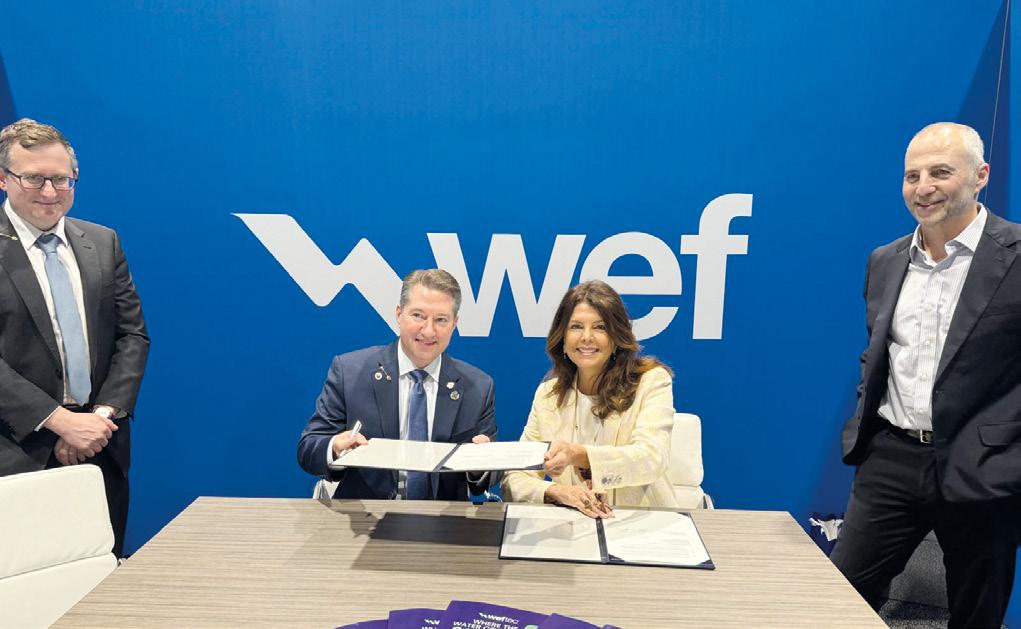
IDRA AND WEF FORGE GLOBAL PARTNERSHIP TO ACCELERATE WATER SOLUTIONS
Two of the world’s leading water organizations have formally joined forces to tackle some of the most pressing challenges in global water management. The International Desalination and Reuse Association (IDRA) and the Water Environment Federation (WEF) have signed a Memorandum of Understanding (MOU) to strengthen collaboration in desalination, water reuse, and water quality management.
A Partnership for a Critical Moment
The agreement comes at a time when water systems around the globe are under historic strain. Climate-driven droughts, rapid urbanization, and surging industrial demand are pushing governments, utilities, and
industries to find new approaches to water security.
By combining IDRA’s expertise in desalination and reuse with WEF’s leadership in water quality and utility operations, the partnership aims
to accelerate innovation, scale best practices, and deepen cross-sector cooperation. Key areas of focus include advancing the circular water economy and addressing the interlinked water–energy–food nexus.
“This agreement brings together two global leaders at a moment when water solutions must match the urgency of the challenge,” said Shannon McCarthy, Secretary General of IDRA. “By uniting IDRA’s worldwide expertise in desalination and reuse with WEF’s deep knowledge of water quality and utility operations, we can bridge science, policy, and industry to deliver practical solutions that strengthen water security in every region.”
Ralph E. Exton, Executive Director of WEF, echoed this sentiment: “The water challenges we face are interconnected and global — no single organization can address them alone. This partnership allows us to align our strengths, mobilize our networks, and create jointprogramsthatdelivermeasurableimpact, from local communities to the international stage.”
Jon Freedman, President of IDRA called for continued collaboration: “This MOU unites IDRA and WEF to tackle urgent water challenges. Together, we will advance desalination, reuse, and wastewater innovation to deliver safe, sustainable water for communities worldwide.”
Joint Initiatives Ahead
The MOU sets the stage for a wide range of cooperative initiatives, including:
ʞ Global Events: Co-hosting a joint WEF/ IDRA global reuse event at WEFTEC.
ʞ High-Level Participation: WEF’s engagement in IDRA’s Reykjavík Summit on Water and Climate Change in 2025, as well as the IDRA World Congress in Riyadh in 2026.
ʞ Industry Collaboration: Joint marketing of major industry gatherings, such as Industrial Water Solutions (IWS) in June 2025.
ʞ Shared Communications: Coordinated communications and social media campaigns for key publications and knowledge sharing.
ʞ Ongoing Collaboration: Additional projects of mutual interest to advance innovation, resilience, and sustainability in the water sector.
Project teams from both organizations will oversee the execution of these initiatives, blending in-person and virtual engagement to ensure global reach.
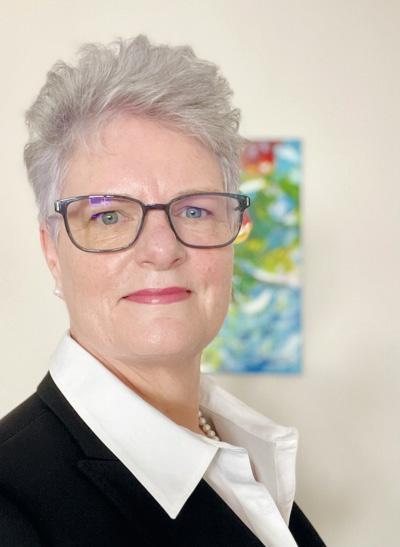
DR. MARY M. MATTHEWS JOINS IDRA
AS UNDP SPECIAL ADVISOR
The International Desalination and Reuse Association (IDRA) has appointed Dr. Mary M. Matthews, PhD, UNDP Global Water Lead (a.i.), as a UNDP Special Advisor.
Dr. Matthews has worked in the water sector since 1995. She combines training as a social scientist with a strong background in ecology. She has served in academia, the public sector, and the private sector. Her career has focused on innovation and multi-stakeholder engagement in environmental and water management.
“I am honored to join IDRA’s Special Advisory Board,” said Dr. Mary Matthews. “I believe that water challenges cannot be solved by technology or policy alone. They require cooperation, innovation, and inclusive dialogue across sectors and communities. I look forward to working with IDRA to advance desalination and
reuse as part of a more sustainable global water agenda.”
Her work emphasizes ecological, social, economic, and institutional aspects of integrated water resources management. She has led projects in Eastern Europe, the former Soviet Union, Africa, the Caribbean, and the Middle East. She has partnered with organizations including UNDP, World Bank, USAID, UNECE, MCC, EBRD, IFC, the European Union, and multiple bilateral donors.
Dr. Matthews is recognized for pioneering inclusive approaches to water management. She specializes in comparative water management and water diplomacy. She is also a certified mediator. She serves as UNDP Senior Programme Manager for UN Water and is actively engaged various leadership roles in the organization.
Jon Freedman, President of IDRA, said: “We are honored to welcome Dr. Mary Matthews to our Special Advisory Board. Her expertise in integrated water management and her leadership in international water diplomacy are critical to advancing IDRA’s mission of sustainable desalination and reuse.”
Shannon McCarthy, Secretary General of IDRA, said: “Mary brings unparalleled expertise from decades of experience in water policy and globalstakeholderengagement.Herleadership ininitiativessuchastheUNDPOceanInnovation Challenge, UN Water, and her role in advancing the SDG 6 Water Action Agenda underscore her commitment to innovative, inclusive, and sustainable water management. Her contributions will help ensure that IDRA’s work remainsbothgloballyrelevantandgroundedin real-world implementation.”
Dr. Matthews will play an important role in IDRA’s upcoming global initiatives. These include the Reykjavik Summit on Water and Climate Change and the IDRA World Congress 2026 in Riyadh.
Her appointment strengthens IDRA’s position as the leading voice in global desalination and reuse and reinforces the organization’s mission to advance sustainable water solutions worldwide, in alignment with UN-Water’s coordination of SDG 6 on clean water and sanitation, UNDP’s efforts to build climate resilience, and the UNFCCC initiatives to accelerate adaptation in water-scarce regions. For more information, visit IDRAwater.org.
IDRA / Affiliates/ Partners Upcoming Events
REYKJAVIK, ICELAND SUMMIT ON WATER AND CLIMATE CHANGE
In conjunction with Arctic Circle Assembly.
Held under the esteemed patronage of Hon. Guðlaugur Thór
Thórdarson, Minister of the Environment, Energy, and Climate of Iceland
12-14 October 2025
Harpa Concert Hall and Conference Centre
Reykjavik, Iceland
10TH GTI INTERNATIONAL CONFERENCE
Greening the Islands
29-31 October 2025
Gozo, Malta
TAIWAN INTERNATIONAL WATER WEEK
29-31 October 2025
IDRA Participating In Taipei, Taiwan
SAUDI WATER PARTNERSHIP COMPANY FORUM
Saudi Water Partnership Company
2-3 November 2025
Four Seasons Hotel Riyadh, Kingdom of Saudi Arabia
KOREA INTERNATIONAL WATER WEEK
12-15 November 2025
Daegu, Korea
7TH INTERNATIONAL CONFERENCE ON DESALINATION
SCIENCE AND TECHNOLOGY 2025 (DESAL 2025)
16- 19 November 2025
Hilton Clearwater Beach, Florida, United States of America
JAPAN DESALINATION ASSOCIATION
2 December 2025
YIM Rental Conference Room Ochanomizu
Japan
XIX WORLD WATER CONGRESS
IDRAParticipating
1-5 December 2025
Marrakech, Morocco
WATER MEMBRANE CHINA 2025
MIAC
20-22 October 20 2025
Venue: China National Convention Center (CNCC), Beijing, China
DIGITAL WITH PURPOSE
GeSI
27-28, October 2025
THE EGG Brussels, Belgium

INNOVATION DRIVEN WATER SUSTAINABILITY
CONFERENCE
IDRA Participating
Saudi Water Authority
8-10 December 2025
The Ritz-Carlton, Jeddah, Kingdom of Saudi Arabia
ACWA POWER INNOVATION DAYS 2026
IDRA Participating Innovate for Impact
26 January 2026
MEMBRANE TECHNOLOGY CONFERENCE
AMTA
IDRA Participating
2-5 February 2026
Myrtle Beach, South Carolina, United States
IDRA – ARAB FUND HIGH LEVEL KUWAIT COLLOQUIUM ON WATER FINANCE AND SCARCITY SOLUTIONS
IDRA Event
9-10 February, 2026
Kuwait City, Kuwait
THE 16TH GULF WATER CONFERENCE
WSTA
19-23 April, 2026
Muscat, Oman
CARIBDA 2026 BIENNIAL CONFERENCE
12-14 May 2026
Grand Cayman Marriott Resort, Cayman Islands
10TH GLOBAL WATER STEWARDSHIP FORUM
A4WS
IDRA Participating Week of 22 June 2026
Edinburgh, UK
SINGAPORE INTERNATIONAL WATER WEEK
Singapore Water Association
IDRA Participating 23-24 June, 2026
Singapore Expo, Singapore, Singapore
IDRA WORLD CONGRESS 2026
DRIVING GLOBAL WATER SUSTAINABILITY THROUGH INNOVATION
1-5 November 2026
Riyadh, Saudi Arabia
IDRA WELCOMES NEW MEMBERS


GHD PTY LTD
www.ghd.com
GHD recognizes and understands the world is constantly changing. We are committed to solving the world's biggest challenges in the areas of water, energy and urbanization. We are a global professional services company that leads through engineering, construction and architectural expertise. Our forward-looking, innovative approaches connect and sustain communities around the world. Delivering extraordinary social and economic outcomes, we are focused on building lasting relationships with our partners and clients. Established in 1928, we remain wholly owned by our people. We are 10,000+ diverse and skilled individuals connected by over 200 offices, across five continents –Asia, Australia, Europe, North and South America, and the Pacific region.
IMPACT FILTRATION

www.impactfiltration.com
Impact Filtration is Harbin ROPV's global strategic partner, handling all sales outside China. We offer advanced, non-metallic solutions for the water and desalination industries. With over a century of combined experience, our team specializes in advanced Fiberglass Reinforced Plastic (FRP) pressure vessels and innovative cartridge filters. We develop sustainable solutions that enhance efficiency and streamline processes, serving as a trusted partner in promoting industrial performance and environmental responsibility worldwide. Our dedication to innovation and engineering excellence helps our partner, ROPV, maintain its leadership in the global market.
www.abergeldie.com
Abergeldie Complex Infrastructure is a majority Australian-owned contractor with over 30 years of experience delivering complex infrastructure that builds better communities. From constructing water and wastewater asset reliability, dam safety upgrades and capital infrastructure projects in regional and metropolitan areas to multidisciplinary rail projects, complex tunnels and shafts and energy storage solutions that enable the transition to renewable energy that connect communities to, Abergeldie's reach extends far and wide and transforms communities. through partnerships and sustainability initiatives to leave a positive legacy.

